








Background of the EOSS
The Energy One Stop Shop (EOSS), which was officially launched by Trade, Industry and Competition Minister, Ebrahim Patel, in July 2023 aims to assist energy project developers by expediting and unblocking bottlenecks experienced with authorisations and permits.
The EOSS is part of the priority action plan of the Energy Mitigation Strategy and is a collaborative effort intended to contribute to resolving the energy crisis and provide much needed administrative guidance and support to developers to provide energy security in the country.
Role of EOSS
• Act as a conduit between developers and authorisation competent authorities.
• Reduce administrative challenges encountered by energy project developers.
• Provide a single window application entry and facilitation process for energy projects.
• Shorten timeframes for project approvals by expediting, fast tracking and removing blockages.
Contact Details:
Email: info@enegyoss.gov.za | Telephone: 012 394 9599 | Website: www.energyoss.gov.za




• Online registration of energy projects on EOSS Portal
Streamlined application process
Conduit between developers and departments
Technical support and advisory services
Linkage with private sector and Industry Associations
Unlocking and unblocking of bottlenecks
Escalation mechanism
Advocacy
• Facilitation of unblocking and unlocking of applications
• Redirecting applications to relevant competent authorities
• Coordination of consultations and engagements between developers and relevant departments
• Support to developers and departments in alleviating capacity challenges
• Provide technical advisory services to developers
• A key source of relevant energy application authorisations to developers
• Engagements between Industry Associations, developers and departments
• Link between private and public sector
• Pursue and resolve challenges that new and existing developers are encountering with their application authorisations
• Escalating challenges that are not being resolved at regional and national and levels
• Assist developers and Industry Associations tackle policy, legal and regulatory elements that retard energy project developments
Rooftop, solar carports, ground-mounted solar, and agrivoltaics represent the best-value energy available to the energy customer in South Africa.
Blue Sky Energy is an expert in the design, procurement and construction of such plants.
Battery energy storage installations provide access to solar energy daily during peak hours when the sun is not shining and enable users to bridge their primary energy needs through grid interruptions. While the levelised cost of hybrid solar and battery storage installations is significantly greater than solar PV only, appropriately sized solutions can be commercially feasible. Would you like to know if your property or business can achieve energy security at the same cost or less than what you are paying currently?
Blue Sky Energy works with leading light steel frame construction suppliers to offer a range of innovative solutions such as agrivoltaics and solar carports.
Have you considered putting your spare space to work? Whether you have low-value land or large parking spaces, bring them to life through solar PV installations that create energy and highvalue spaces such as shade for parking or tunnels for agriculture.


Website: www.blue-sky.energy Email: enquiries@blue-sky.energy
Did you know that Section 12B of the Tax Act allows for the accelerated depreciation of your power generation capex, resulting in a 27.5% saving on your project installation?




CONTACT THE EXPERTS AT BLUE SKY ENERGY RIGHT NOW!
Dear Reader,
As we all know, there has been a proliferation in the sale of solar and battery solutions in South Africa across all sectors, driven by loadshedding. But what of the business case for these applications and solutions? In other words, is the investment worth it?
For commercial solar PV, the answer is an unequivocal yes. The payback period, excluding the s12B tax incentive, allows accelerated depreciation of 120% of capex in year one and is in the region of three to five years. Not bad for a system with a 25-year lifespan.
The battery energy storage business case depends on several factors: the cost of shutting down operations and/or the cost of running diesel generators. An offset against the cost of running diesel gensets alone will result in a payback period in the region of two to three years. Not bad for a system with a 10 to 15-year lifespan.
For most businesses, therefore, solar PV and battery investments are feasible, and in many cases, simply an excellent business decision.
Enjoy your read,
Publisher
At SIDSSA 2024, President Cyril Ramaphosa announced that South Africa needs R4.8-trillion to achieve its infrastructure goals by 2030. SIDSSA has been pivotal in driving public-private investment for strategic infrastructure projects ( page 22). As project preparation is key to developing a viable project pipeline, government has made interventions to provide a predictable funding regime and consolidate expertise in developing bankable projects.
However, participants active in the South African National Infrastructure Plan need to examine their investment model against the key factors involved in ecological economics. Failure to do so will result in investment continuing its harmful impact on natural, social and constructed ecosystems ( page 26).
Urban Analyst, Llewellyn van Wyk, says that infrastructure development is reductive: the exchange of goods and services between itself and the natural and social ecosystems weakens biological and sociological functionality over time. The exchange flow is one-dimensional (from the resource base to the resource consumer), and the benefits of that resource use are unequally distributed among population groups and prejudicial to future generations.
Van Wyk attests the claim that “infrastructure investment is key to the future of cities” is invalid if that investment is out of line with ecological economics.
As the global population expands, so too does the demand for reliable and renewable energy sources. A solution to this growing demand lies in creating strategic interconnections that allow for increased electricity trade. Energy transmission infrastructure projects are notoriously high-risk and capitalintensive. Read about the $1.3-billion regional transmission infrastructure financing facility on page 18 .
On page 34 , we speak to Professor Linda Godfrey, principal scientist at CSIR, who is helping to inform the transition to a more circular South African economy.
Alexis Knipe Editor




SAPVIA has made a comprehensive submission to the Department of Mineral Resources and Energy (DMRE) on SA’s new Integrated Resource Plan (the IRP 2023).
“SAPVIA commends the DMRE for their work on the IRP. We support its overarching purpose of ensuring electricity security while balancing other key objectives like decarbonisation,” says Dr Rethabile Melamu the CEO of SAPVIA. SAPVIA appreciates the IRP 2023’s two-horizon approach, which splits focus between addressing the immediate crisis and mapping out a long-term plan. However, the industry association’s submission highlights several areas where the draft IRP could be strengthened. The suggestions centre around:
• Ensuring stronger alignment with key related policies and plans, such as the ERA Amendment Bill, Transmission Development Plan, and the South African Renewable Energy Masterplan.
• Providing greater transparency in modelling assumptions and updating technology costs to reflect real-world data.
• Clarifying the role and scale of private sector generation, as current allocations appearunderstated.
• Accounting for future technology advancements and cost reductions in battery energy storage.
• Detailing the costs and timelines of emission retrofit
• Decommissioning scenarios for coal plants.

“To address these issues, SAPVIA recommends accelerating solar PV deployment, significantly raising the distributed generation allocation, investing in transmission infrastructure and reforming the IRP process to be more consultative, transparent and responsive to market realities,” she adds. Acknowledging the ongoing role of fossil fuels in SA’s proposed technology-agnostic supply mix, the submission also emphasises the need to fully consider and articulate the growing economic risks of a carbon-intensive power system in the IRP, as SA balances energy security and decarbonisation imperatives.
“SAPVIA remains committed to working with the DMRE and other stakeholders to shape a dynamic, fit-for-purpose energy plan for SA,” Melamu concludes. “We are confident that renewable energy can power SA’s energy transition while supporting economic growth and social development.”
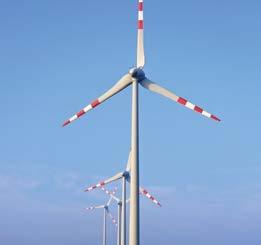
Enel Green Power and Qatar Investment Authority, through their jointly controlled entity, Enel Green Power RSA, have concluded three long-term Power Purchase Agreements (PPAs) with Air Liquide and Sasol SA to supply 330MW of renewable energy to Sasol’s Secunda site, where Air Liquide operates the world’s largest oxygen production facility. This makes Enel Green Power RSA one of the first renewable energy companies to conclude a set of large-scale wind PPAs in SA for the Commercial and Industrial (C&I) market. The power will be generated by three joint venture-owned wind projects located in Eastern Cape and are expected to be operational by 2026 (see page 60). This 330MW cluster complements the existing platform of over 730MW already in operation and is expected to result in an annual production of more than 1 100GWh.
Norton Rose Fulbright SA is pleased to announce its role in advising Pele Green Energy on the landmark Southern Africa first-mover wheeling projects with Anglo-American and EDF as co-shareholders. These pioneering projects involve AngloAmerican mines, smelters and refineries as off-takers, with a combined capacity of 520MW. The transaction represents a pioneering development in the market, showcasing a unique trading platform and off-take structure. It offers an exceptional opportunity to efficiently allocate energy from the projects to off-takers while providing portfolio benefits and risk mitigation.
Mainstream Renewable Power has reached financial closure on 20-year PPAs for a 97.5MW solar PV farm in the Free State with Sasol and Air Liquide. Construction will start this year and power generated will be delivered via the national grid to Sasol and Air Liquide’s operations in Secunda, with energy production to go online in 2025. Mainstream’s GM, Hein Reyneke, says private PPAs are crucial to unlocking the country’s energy constraints. Private off-take agreements enable significant quantities of energy to be delivered quickly, reducing companies’ exposure to rising energy costs.
USE-IT NPO has emerged as a beacon of environmental change by pioneering waste beneficiation and recycling practices. Founded to divert waste from landfills and boost job creation USE-IT’s innovative approach has yielded significant successes over five years. By harnessing cutting-edge technologies, it has turned waste into valuable resources, fostering sustainable business models and SMME development.
Strategic partnerships with local stakeholders facilitate efficient collection and processing of recyclables. Notable successes include the growth of SMMEs like Owethu Sewing, Home Decor, and Educational Toy Project. Moreover, USE-IT’s commitment to innovation extended to township economies, notably through projects like Green KEY Brick, catalysing environmental change both locally and internationally. Community engagement initiatives, including educational programmes and partnerships with waste pickers, underscore USE-IT’s dedication to social impact. Collaborative efforts with schools further promote recycling awareness among the youth.
As a testament to its commitment, USE-IT continues to advocate for environmental stewardship and economic empowerment. With gratitude to supporters like the eThekwini Municipality, USE-IT’s vision persists: to transform waste into opportunity and lead the charge towards a greener future in KZN townships.
Growthpoint Properties has entered into a milestone PPA with Etana Energy for 195GWh of renewable energy a year, representing 32% of its total current annual electricity consumption.
In 2023, Growthpoint signed a PPA with licenced electricity trader Etana Energy to wheel electricity to its commercial property buildings in several jurisdictions nationwide.
The deal has set in motion South Africa’s first multijurisdiction, multi-building, multi-source renewable energy wheeling arrangement and will enable Growthpoint’s tenants to access green energy and reduce their carbon footprint.
Through this agreement, Etana will cover 70% of the power consumed by Growthpoint’s participating buildings, and in some buildings, Growthpoint will provide its tenants with the ability to purchase 100% renewable energy.
Growthpoint has exclusive rights to purchase all of the roughly 30GWh that will be generated annually by a 5MW hydroelectric power plant developed, owned and operated by Serengeti Energy. The project is situated within the Lesotho Highlands Water Scheme (LHWS), which provides the added benefit of effectively generating 24/7 baseload power. Growthpoint has also shown some interest in investing in the power plant by signing a MoU with Serengeti Energy. Serengeti Energy owns and manages renewable energy projects of up to 50MW (mainly hydro) in sub-Saharan Africa and currently operates nine plants in five countries.
Initially targeted for South Africa’s REIPPPP, Serengeti’s focus for this hydro plant shifted, and it advanced the project for the C&I sectors. The project is well-placed to capitalise on the LHWS Phase 2 future expansion. The hydroelectric power plant has reached financial close and is currently under construction. The commercial operation’s date is expected to be 1 July 2025, when it will supply its first electricity to Growthpoint, wheeled via the Eskom grid and traded through Etana. Thereafter, the commissioning of wind and additional solar production from Etana’s portfolio of renewable energy projects connected to the national electricity grid will commence.


Teraco, vendor-neutral data centre provider, has secured its first grid capacity allocation from Eskom and will commence construction of a 120MW utility-scale solar PV energy facility in the Free State. The allocation from Eskom enables Teraco to connect its solar facility to the national electrical grid. The power generated will be wheeled across Eskom and municipal power networks to Teraco’s facilities across South Africa.
“This will be a unique approach in Africa since Teraco will not only own its data centre facilities but also a significant renewable energy source with which to power them, creating a sustainable energy path to support growth,” says Jan Hnizdo, CEO at Teraco. When fully operational, the solar plant is expected to produce over 338 000MWh annually.
Teraco has partnered with JUWI Renewable Energies South Africa and Subsolar to develop the solar PV plant. In a first for Teraco, a green loan has been raised to finance construction of the plant.
Kimberly-Clark has signed a long-term PPA with Energy Partners, which will include the installation of a 2.2MW rooftop system at Kimberly-Clark’s Epping facility, making it one of the largest rooftop solar PV systems in Cape Town. The system is expected to produce 3 478MWh of energy per year, saving more than 3 130 tons of carbon dioxide emissions each year. Construction of the system, which will include 4 000 solar panels, will begin shortly. The system is expected to produce its first clean energy in the second half of this year.
A newly launched scheme from the City of Cape Town allows residents to further leverage the benefits of their solar power systems, selling excess generated energy back to the city for cash instead of credits against municipal bills.
“The improvements in the cost-effectiveness, efficiency and reliability of solar technology in the past decade have been nothing short of remarkable. As we continue to experience a high adoption of solar from customers across the country, we’re excited to elevate those in the City of Cape Town’s experience by facilitating access to the new payback surplus power scheme,” says Andrew Middleton, CEO and co-founder of GoSolr, the company that facilitates the ability to feed in excess energy for all Cape Town customers.

Through the “Cash for Power” programme the city intends to source as much excess solar energy as available from businesses and residential properties to feed back into the city’s grid.
GoSolr, South Africa’s largest subscription-based residential solar provider, offers residents the ability to install solar without any initial capital outlay or investment beyond a month-to-month fee, democratising access to solar power. www.gosolr.co.za










Startling insights into the supply and demand dynamics of South Africa’s expanding carbon market were recently revealed in The Brundtland South African Carbon Market Analysis . These include the stockpiling of carbon tax offsets, a significant supplydemand gap extending to 2043, and the need for increased carbon credit generation at a significant scale.
BY BRUNDTLAND CONSULTING
To curb its future greenhouse gas (GHG) emissions, South Africa applies – among others – a combination of carbon tax and carbon market policies. These essential tools for combatting climate change motivate organisations to reduce their GHG emissions to avoid paying higher taxes and incentivise investment in cleaner technologies and practises.
Introduced in 2019, South Africa’s Carbon Tax Act covers 90% of local GHG emissions and includes an offset allowance to offset 5% to 10% of taxable emissions. This increased the local demand for carbon credits and boosted the local carbon market, in which the listing, transfer and retirement of eligible carbon credits as carbon tax offsets (CTOs) is facilitated by the Carbon Offset Administration System (COAS).
The recent Brundtland South African Carbon Market Analysis investigated the movement of carbon credits as CTOs across the COAS registry between 2019 and 2022 and revealed important insights into the supply and demand dynamics of our expanding local carbon market.
Almost none of the CTOs currently listed in the COAS will expire. Instead, their value increases each year due to annual carbon tax rate hikes, which – as per the amended Carbon Tax Regulations – increases from R159 for the 2023 tax period to R462 for the 2030 tax period.
As such, holders of CTOs are likely to sell or retire these only later, when it is more financially attractive. Brundtland’s analysis shows that a significant number of CTOs are being stockpiled in the COAS registry. In fact, CTOs retired on COAS decreased by 52% in 2023 (at the end of the 2022 tax filing season), as holding onto the CTOs may be more lucrative.
In addition, the listing of new CTOs dropped by 29%. A potential factor in reduced listing activity may be the stockpiling of carbon credits on the registry of the issuing carbon standard. These changes have led to a more than doubling of the stockpile, as shown in Figure 1.
CTOs from some project types are only eligible until the end of the 2025 tax period, end of phase 1 (extended). These CTOs constitute a lower share of listings in 2023 compared to 2022. The largest share of CTOs in the stockpile are eligible for use after 2025. This will enable companies who have accumulated CTOs to capitalise on the substantial tax rate increase of 30% which occurs from 2025 to 2026.
Analysis further shows that the criteria for post-2025 eligible CTOs significantly limit the supply, advancing the gap between supply and demand. Currently, several projects generate pre-2025 eligible CTOs, however, few projects are generating post-2025 eligible CTOs. Although it is expected that this group of CTOs will increase, this supply is only additional to a subset of currently eligible projects, resulting in the dip in supply seen in 2026 in the graph on next page.
Brundtland’s analysis further revealed a continuous supply-demand gap for CTOs, extending at least until 2043. The cumulative deficit amounts to approximately 143.5-million CTOs for the period 2023 to 2050, also illustrated in the graph below.
The demand for CTOs is expected to increase between 2026 and 2035, primarily driven by higher demand from the energy sector. The projected demand analysis considers the effect of carbon tax


on the energy and industrial sectors, as they will aim to reduce their emissions by 5% to 10% through using CTOs. The demand projection also considers the implication of South Africa’s Nationally Determined Contribution (NDC) and assumes a linear trajectory to net-zero emissions in 2050.
This illustrates that there is a need for increased carbon credit generation at a significant scale. It is crucial to acknowledge that engaging in projects that generate carbon credits can be challenging, considering the expertise required for project implementation, the complexity to measure and verify emission reductions and the
regulatory compliance requirements. Further, the eligibility criteria for carbon credits under the South African Carbon Tax is restrictive, for example, excluding activities that had received an energy efficiency allowance under section 12L of the Income Tax Act.
The supply and demand dynamics of South Africa’s expanding carbon market will affect many local companies as they face increasing carbon taxes and tougher competition for the already-tight supply of CTOs that will be in ever-greater demand.

greeneconomy/report recycle Mind the Gap, a deficit of 143.5-million CTOs across the various tax phases.
THOUGHT [ECO]NOMY
THE



providing capital to address the world’s most pressing challenges
Green Economy Journal speaks to Mike Adsetts, CIO at Momentum Investments, about impact investment, the strategy that generates positive, measurable social and environmental impact while also achieving acceptable financial returns.
 Mike Adsetts, Chief Investment Officer, Momentum Investments.
Mike Adsetts, Chief Investment Officer, Momentum Investments.

A common starting point for implementing impact investing in practice is the United Nations’ Sustainable Development Goals (SDGs). The member states of the United Nations adopted the 17 SDGs with 169 targets in 2015 as part of the 2030 Agenda for Sustainable Development. These goals form part of an extensive globally coordinated action plan to end poverty and reduce inequality, while also protecting the planet, tackling climate change and spurring economic growth. The goals recognise that social and environmental issues affect everyone and thus apply to every country, irrespective of their “developed” or “developing” economic status. Sustainable development embodies the idea of doing well by doing good.
Impact investing includes profit as one of its main objectives, so while there is a commitment to social and environmental impact, investors still earn a market rate of return.
Impact investments should form part of your investment portfolio because of the following benefits:
Diversification benefits. The investments are more likely to be unlisted, private market assets, so they won’t move in tandem with public market assets. Risk and return drivers are also different to
public market assets. Assets in regulated industries provide stable cashflows even through times of economic weakness.
Alternate sources of return. There would typically be an illiquidity premium embedded into these assets, which a holder would be able to access over the long term. Additional returns to equity holders through balance sheet refinancing is also a common occurrence in infrastructure projects.
Inflation hedge. Revenues generated by underlying investments are adjusted by an inflation factor, which benefits investors. In addition, concession agreements and other off-take agreements are long-term, meaning greater cash flow certainty.
Demonstrable positive impact and financial returns. This investment would provide a physical infrastructure that would be of economic utility. There would be measurable outputs from each project in terms of positive societal impact.
We define responsible investing (RI) as an investment process that includes ESG factors into our process. Issues like increasing regulation, the growing need for risk mitigation and a heightened social conscience can be addressed by integrating ESG factors into our investment process. We acknowledge that we are in a privileged position to act as fiduciary to our clients and
stakeholders. We consider the ESG risk of our investments to be relevant to the performance of the overall objective – across all asset classes, sectors, markets and through time.
This is an approach to investment that explicitly acknowledges the relevance to the investor of ESG factors and of the long-term health and stability of the market. It recognises that the generation of long-term sustainable returns is dependent on stable, wellfunctioning and well-governed social, environmental and economic systems. We ensure ESG integration through various governance structures within our business.
Each of the factors can affect companies in different ways and can be integrated into an evaluation approach. For example, carbon emissions can be measured and potential carbon tax liabilities factored into a company valuation.
Other factors are nuanced and may require a more judgemental approach. Governance risks and the red flags around them need to be considered. The famous example here is Steinhoff and how the governance failures led to a dramatic destruction of value.
The hardest ones to quantify tend to be social factors and once again a qualitative impact perspective can be considered.
Investors can do research on the investment managers to see if they uphold the principles of RI. At Momentum Investments, we: Advocate. We participate in market-related industry events and serve on the responsible investing committee of the industry body the Association of Savings and Investments South Africa (ASISA).
Report on progress. We show investors that we take our duty to act in their best interests to heart by publishing our poxy history, our stewardship report, and our responsible investment and climate change investment policies, among others.
Seek disclosure. We have a register that shows how we engage with companies that we invest in to keep them accountable.
Are active owners. We use our influence to help maintain a well-governed corporate South Africa.
Integrate ESG. We have a responsible investing committee that serves as an oversight function of responsible investing practices across the investment team. We follow an integrated ESG approach across all our asset classes.
Have integrity. We keep to and observe all rules and regulations which seek to uphold the principles of responsible investment.
Sustainable development embodies the idea of doing well by doing good.
By incorporating social and environmental targets into their investment strategies, investors can align their impact objectives to the SDGs and track their contribution towards achieving these goals. Using metrics that reflect their effect on specific SDGs, investors can address how they are contributing to a sustainable and equitable future.
There is a huge need for impact investing with considerations like levels of liquidity, deal availability and size, and role players involved needed to be considered. There is still a lot of work that needs to happen to increase trust levels between the public and private sectors with Public Private Partnerships (PPPs) still not finding significant traction. All of this has resulted in relatively limited deals.
When these barriers are overcome, there will be increasing opportunities in energy, logistics and water infrastructure.
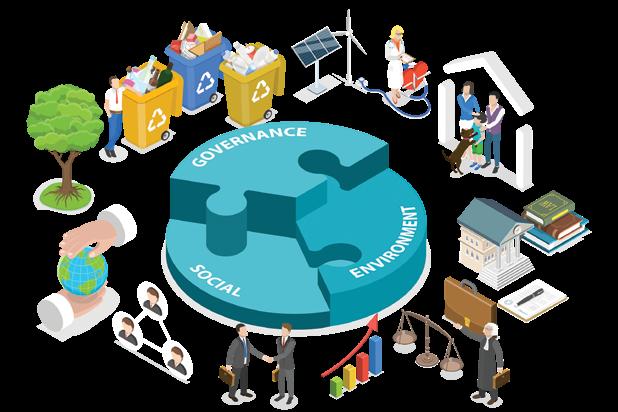
Chief sustainability officers from some of the world’s largest companies were interviewed for KPMG’s global survey on ESG governance and organisation, to gain a deeper understanding of how companies are structuring their set-up and teams for sustainability and responding to a wave of new regulation and increased pressure for transparency on ESG. Almost all respondents reported high ambitions for ESG in their organisations, with half now viewing sustainability as a strategic issue that is embedded in core business operations. With ESG covering a wide area of societal and governance issues, the challenge for many businesses can be deciding what to prioritise. Decarbonisation and the race to net zero were the topics most often included in their corporate ESG strategy, with diversity, equality and inclusion and human rights in the value chain as the next most-mentioned theme.
The question now facing many business leaders is who should make the ultimate decision on ESG as it increasingly becomes embedded in a company’s fabric. The CEO is responsible for sustainability in almost half of the organisations surveyed, with a dedicated chief sustainability officer as the second most popular option. The remaining respondents revealed a wide variety of roles taking charge of ESG – from head of supply chain and manufacturing to the chief risk officer.
Reporting on ESG has generally been a voluntary exercise. Still, some jurisdictions are in the process of making it compulsory, most significantly the EU through its Corporate Sustainability Reporting Directive (CSRD). Nearly half of the researched organisations plan to report under CSRD for the 2024 financial year, with nearly a fifth more planning to do so in 2025.
Nearly three-quarters of organisations in this research have six or fewer full-time equivalent staff working on non-financial reporting, and more than half have three or fewer. Just over half expected to see an increase in this number, with the remainder anticipating numbers to stay the same.
Just under half of the organisations in this research have ESG topics in their core corporate key performance indicators (KPIs), with more than a quarter including them in management-level performance reviews.
Almost half of the organisations interviewed produce internal indicators every quarter and several use monthly reporting for certain measures. Annual is the most common frequency for external reporting used by more than three-quarters of organisations, with the remaining respondents doing so quarterly.
ESG KPIs are used in calculating executive pay in most of the organisations researched, with just over half using these for short-term and two-fifths for long-term incentives. Just under half have between 16% and 25% of variable executive pay linked to ESG indicators.
In the past 18 months, South African businesses have installed over 3GW of rooftop capacity alone, which has relieved some pressure from the national grid. However, as they try to replace more of Eskom electricity with renewable power, many businesses are targeting short-term wins at the expense of sacrificing significant long-term value.
BY DISCOVERY GREENDiscovery Green recently analysed over 200 business consumption profiles and 30 renewable energy generation sites, which have revealed insights into the popularity of solar and the need for a diversified approach to renewable energy procurement among South African businesses.
It’s clear that the growing awareness of the possibility of wheeling from utility-scale solar generation plants, has boosted investment to the sector. Solar has become an attractive proposition because it offers a cost-effective solution to replace roughly 50% of many businesses’ current grid-drawn electricity. However, many businesses are falling into a trap that makes their transition to clean electricity more expensive than it should be.
The Head of Discovery Green, Andre Nepgen, believes that businesses could be paying less for their renewable energy procurement through a more strategic approach, which is sorely needed especially because South Africa grapples with a historically low-energy availability factor.
The biggest insight from Discovery Green’s data is that businesses often reach a tipping point of wasted generation after installing approximately 50% of their total energy needs in solar capacity. This is caused by a common mismatch between solar generation profiles and business consumption patterns. Because renewable energy is paid for at the point of generation and not at the point of consumption, this mismatch leads to significant wasted generation and cost implications when businesses try to push their renewable energy capacity beyond this 50% threshold.
“A mismatch of renewable energy generation and consumption occurs because businesses typically consume 40% of their energy during standard hours, usually daytime weekdays; 45% during offpeak hours, usually nighttime or low-usage weekends; and 15% during peak hours, usually rush hour mornings and early evenings. On the other hand, solar generation typically results in 60% of energy being produced during standard hours, 22% during off-peak hours and 18% during peak hours,” explains Nepgen.
The low level of coverage offered by solar energy in isolation is not the only factor a business must consider. Once the business has covered 50% of its consumption profile with solar capacity, its leftover consumption pattern shifts dramatically. Instead of using electricity mostly around off-peak and standard hours, only around 15% of its consumption is standard, 10% is during peak time, and a staggering 75% is consumed during off-peak hours. No renewable energy generation technology can match this profile without the business having to pay an exorbitant premium for wasted generation. So, to
cover this remaining 50% of its energy requirement with renewable energy becomes economically prohibitive.
“The usual advice given to businesses is that they should consider using batteries to store excess solar energy and redistribute it during the evening off-peak periods. But the economic outlay for implementing that significantly exceeds the cost of traditional utility power from Eskom,” says Nepgen.
“Our view is that battery storage is a more economically viable alternative to diesel in high loadshedding scenarios, but not to regular electricity usage. Green hydrogen is similarly expensive. Wind generation presents a comparable economic challenge, as it can only cover approximately 65% of the needs of a business before energy wastage occurs. Additionally, South Africa lacks a liquid market for renewable energy, further complicating the procurement of renewable energy to offset shortfalls,” adds Nepgen. The consequence is that any business that wants to convert its energy consumption to 100% renewable energy, currently does so by paying a premium due to an untenable amount of wasted energy.
“This is a quintessential example of winning the battle but losing the war. Given that renewable energy is clean, can already be produced at a rate cheaper than conventional grid sources, and can even be contracted for at a stable long-term price in real terms, there is a clear alternative way forward,” says Nepgen.
Discovery Green’s proposed solution is simple yet profound: diversification. By collaborating with industries with different consumption patterns, Discovery Green has created a consumption portfolio that optimises businesses’ energy usage. For instance, a manufacturing company that halts operations during summer holidays could partner with the hotel industry, which experiences increased demand during this period, to utilise its excess energy.
“This approach not only reduces costs, but also enhances competitiveness and sustainability. By combining different industries and their consumption profiles, we have found that a portfolio can achieve a much higher percentage of renewable energy coverage for everyone without generating wasted energy. The data shows that if one industry alone could only reach 50% of renewable energy coverage, a portfolio of three could reach 75%, and the more industries added, the higher this number becomes,” says Nepgen. The law of large numbers also helps as the overall volatility of a portfolio decreases. A diversified platform can absorb more randomness in consumption.
Nepgen argues that embracing a diversified portfolio approach to renewable energy procurement can unlock the potential for higher renewable energy percentages, benefiting both individual companies and the economy.
The Discovery Green Renewable Energy Platform draws together a wide range of businesses and their energy consumption profiles at scale and connects with leading renewable energy providers that have been successful in large-scale private sector development and government programmes. By doing so, the platform has the benefit of diversification and economies of scale, in bringing you clean energy. The Journal speaks to Andre Nepgen, Head of Discovery Green.

Please provide an overview of Discovery Green. Discovery Green is a renewable energy platform that brings together scale, expertise, actuarial modelling and sophisticated systems to make it simple and affordable for businesses to run on renewable energy.
How is Discovery Green revolutionising renewable energy in South Africa?
Every business consumes electricity differently, both in terms of the amount of consumption (MWh or kWh) and time of consumption (peak, off-peak or standard). For most businesses, a renewable power plant will generate too much electricity during certain times and not enough during others. This creates a mismatch between the generation and consumption of renewable energy, which in turn, reduces the affordability and efficiency. A consequence of this is having to pay for renewable energy that is not being consumed, or not consuming enough, thereby missing out on potential savings and emission reductions. There is a fine balance here that requires diversification, scale and sophisticated modelling.
Discovery Green is the only platform that provides companies with a 90% or more replacement of their expensive, dirty electricity with affordable, clean, wheeled energy as a standard offering.
What is Discovery Green’s objective?
We help businesses meet their decarbonisation goals and provide savings and certainty to the cost of electricity. In doing so, we are
supporting the development of private electricity generation in South Africa and lessening the impact of loadshedding over time.
Please give an overview of your products.
We have developed two products aimed at addressing the two potential needs of any business. The first, the Green Saver, finds the highest point on the Energy Frontier and maximises the financial savings and emission reductions for businesses. The second, the Green Guarantee, allows businesses to fully run on renewable energy and reduce their emissions.
What is renewable energy wheeling?
Renewable energy wheeling involves the purchase of privately generated electricity connected to the national grid. Large, utilityscale renewable power plants are constructed in areas of the country with attractive wind and solar resources. The renewable energy that is generated is fed into the national grid at the point of generation and the business (or “off-taker”) enters into a purchasing agreement with the private power generator to be credited for the consumption of this power.
We help businesses meet their decarbonisation goals and provide savings and certainty to the cost of electricity.
How does wheeling reduce a company’s emissions?
Wheeling of renewable energy will reduce a business’s scope 2 emissions. For most non-industrial businesses, scope 2 emissions account for most greenhouse gas emissions. Wheeling of renewable energy is often the most effective way to achieve carbon neutrality.
Why should businesses maximise renewable energy coverage?
When choosing low renewable energy coverage, renewable energy suppliers may wish to wheel cheap solar power to businesses during standard periods. This may set businesses up to pay higher tariffs for renewable energy in future when coverage levels are increased, to begin offsetting a skewed residual consumption profile.
There is a financial benefit to maximising coverage of renewable energy now as opposed to filling up demand in incremental steps. Delays in maximising renewable energy coverage means businesses would do without the full potential savings available from renewable energy wheeling.
There are also limited renewable energy plant sites available with the ability to connect to the national grid. The unpredictability of future grid availability may lead to uncertainty in future renewable energy prices.

A holistic approach to ESG-linked funding can unlock additional funding benefits for businesses. Understanding the various elements in the ESG umbrella and the interplay between them, coupled with determining the right funding instrument and type of funding arrangement, appropriate metrics, reporting obligations and intervals is key to this.
BY NATASHA PATHER, PARTNER, WEBBER WENTZELESG-linked financing is a hot topic in the finance arena. What does it mean for you? To begin, let’s define “ESG”. “ESG” is an umbrella term encompassing three broad spheres –environmental aspects, social causes and governance issues. These three spheres are often considered mutually exclusive, but this is frequently not the case, and they can each be much broader than they first appear.
A great practical example of the interlinked nature of ESG is a renewable energy project. There are obvious potential environmental benefits to the construction and operation of a renewable energy project. When you look closer, however, it is easy to see how the implementation of that project can have farreaching social implications for the immediate local community and broader society – job creation, contributing to relieving the energy crisis and income generation, to name a few – while the manner of implementation, quantifying and reporting on performance, as well as ensuring compliance with the relevant regulatory regimes falls firmly within the “governance” sphere.
Businesses tend to focus on the environmental aspects, as these are easiest to identify and quantify, but the social and governance
Sustainable financing is typically a better fit for larger corporates.
aspects can be equally important levers when negotiating your funding arrangements. The interplay between these aspects is key to unlocking value in funding arrangements.
In the South African market, we generally see two types of ESGlinked funding made available to corporate borrowers – sustainable financing and use of proceeds financing (also sometimes known as green loans or social loans). Here are a few high-level risks and benefits of each and when they might be suitable for your business:
Sustainable financing is a type of funding that allows borrowers to measure their performance against a set of predetermined key performance indicators (KPIs). Depending on the level of performance achieved against those KPIs, the borrower can obtain a
financial benefit, such as a margin reduction or access to additional funding for which that borrower may otherwise not be eligible. A failure to perform against one or more KPIs can sometimes also result in a margin ratchet, which was not the case in the early days of sustainable financing. Depending on the number of KPIs and level of performance with individual KPIs and the margin ratchet or reduction may be structured on a tiered basis.
Naturally, this arrangement requires detailed and accurate information to be delivered timeously to and verified by the funders. Suitable KPIs are usually determined with reference to the nature and extent of the business of the borrower or its group, its operational requirements and what is achievable and sustainable, without compromising on the business’ product.
This type of funding typically takes the form of a loan instrument, rather than a bond, commercial paper or other securities, as the number of funders is generally limited (and thus the borrower is more easily able to manage these information requirements with a smaller pool of funders).
Depending on the nature of the business of the borrower, its creditworthiness and various other factors, other financial institutions may also not be able to participate in the instrument, which would limit uptake in the broader market.
Sustainable financing is typically a better fit for larger corporates who already have their own corporate social responsibility programmes geared towards one or more ESG objectives and have the relevant information and verification systems and relationships in place, as well as the requisite financial resources to implement these.
Funders may be willing to accept pre-existing KPIs determined by the borrower where it can be shown that adequate consideration and objective assessment has gone into determining these KPIs, however, they may wish to set their own KPI targets or verify that the proposed targets are sufficiently ambitious.
In the UK and European markets, there appears to be an emerging trend of requiring more aggressive KPI targets, both upfront and year-on-year, to avoid allegations of greenwashing. The basis for these allegations within the funding space specifically seems to be that the funders’ intervention has not caused the “good behaviour” for which both these corporates and funders are being rewarded through financial incentives. We may see a similar trend for more aggressive KPI targets in future in the South African market and perhaps more punitive margin ratchets and structuring.
The benefits of a sustainable financing arrangement are that a borrower can:
• Save on its interest costs (and often in circumstances where it is already complying or aligning with its own internal objectives)
• Potentially access additional funding that it may otherwise not be eligible to access
The risks are that:
• Failure to comply could result in an increased interest cost
• If the KPI targets are not set at appropriate levels, one could potentially face allegations of greenwashing


Use of proceeds financing focuses on the purpose against which the proceeds are applied. This funding arrangement can be either a loan (or similar instrument) or a security, such as bonds, notes or other commercial paper. Listed bonds and notes tend to largely be limited to the use of proceeds financing due to many of the factors mentioned above.
This type of funding is appropriate where it is possible to link the purpose to which the funding will be applied to an ESG-linked cause. This purpose could take various forms, such as a once-off expenditure, for example, the installation of a solar-powered system, a multi-stage project, such as the construction of a greenfields development; or a brownfields expansion, or even a longer-term, ongoing initiative such as a housing or education development programme.
We initially saw several “green bonds” or “green loans” (also known as sustainability-linked funding instruments) where the proceeds were used to fund an environmentally friendly or climatebased initiative. There has been a recent rise in the number of social funding instruments (targeting, for example, housing or employment initiatives), “blue” funding instruments (targeting ocean-based initiatives) and sustainability funding instruments (which combine characteristics of green and social instruments).
A benefit of this type of funding is that it can be more accessible for a broader range of borrowers or issuers, ranging from governments, project companies and big corporates to smaller enterprises looking to fund an ESG-linked purpose. There are even products available now to individuals who are looking to fund alternative energy sources for their homes. In addition, access to the listed and unlisted bond market may provide additional funding opportunities for a range of borrowers.
It is a key requirement for the borrower or issuer to disclose how the proceeds are applied for this type of funding. This may include a report on initial expenditure and subsequent reporting on the actual and anticipated impact of the funded initiative.
There are similar risks and benefits for this type of funding –namely, a potential margin ratchet for non-compliance, on the one hand, and a margin reduction and/or access to additional funding on the other. Greenwashing also remains a risk if, for example, the purpose to which the loan proceeds are applied does not actually benefit, or even indirectly support an initiative that actively harms the relevant cause.
Additional bond market considerations may also apply if the funding instrument is a debt security. These include, on the one hand, access to a different, potentially broader pool of funders (each with their own internal investment criteria) and the ability to determine the pricing of the instruments up front. On the other hand, the listed bond space is also subject to additional regulatory requirements, which may impose further reporting obligations and pose other regulatory pitfalls.
There are even products available now to individuals who are looking to fund alternative energy sources for their homes.

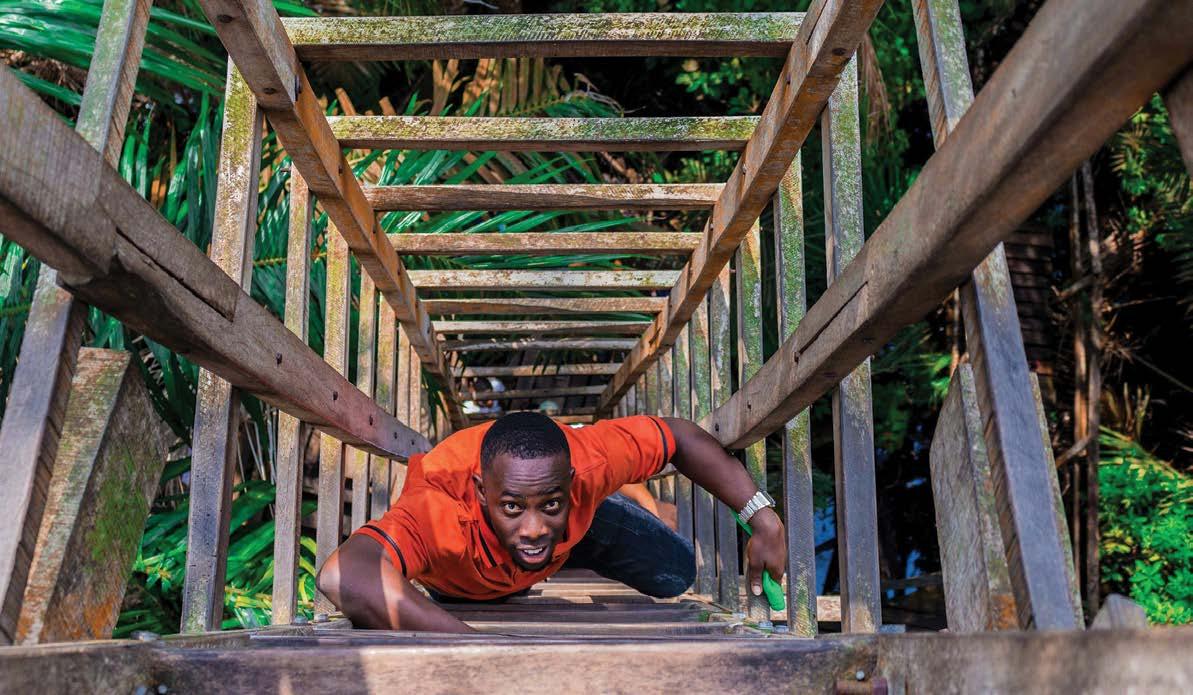
Blended finance gives institutional investors access to impact outcomes that suit their risk appetites while enabling emerging economies to access the financial resources required to support their transition. It is a critical component of the global climate solution. We speak to Kevin Anderson, head of strategic initiatives, CFM.
Please provide an overview of Climate Fund Managers (CFM). CFM is a leading climate-centric blended finance fund manager. Established in 2015, CFM is a joint venture between the Dutch entrepreneurial development bank, FMO, and Sanlam InfraWorks, part of the Sanlam Group of South Africa. Our purpose is to end the climate crisis. We do this by raising and deploying climate finance funds in partnership at scale and at pace. Our focus is the emerging markets (Africa, Asia and Latin America) where communities and the environment are most vulnerable to, and impacted by, climate change.
CFM currently manages two circa [US]$1-billion blended finance equity infrastructure funds focused on climate change mitigation and adaptation in the emerging markets: (1) Climate Investor One focused on renewable energy and (2) Climate Investor Two focused on water, sanitation and ocean infrastructure. We are currently implementing
further blended finance initiatives in the green hydrogen and energy transition sectors, the GAIA loan fund focusing on financing climate mitigation and adaptation projects across the Global South, power transmission with a specific focus on green grids and in the future, a resilient cities-focused fund.
Please tell us about the Regional Transmission Infrastructure Financing Facility (RTIFF). The Regional Transmission Infrastructure Financing Facility (RTIFF) is a unique partnership between the Southern Africa Development Community (SADC) countries, the Southern Africa Power Pool (SAPP) and CFM and is the incarnation of the SDG 17: partnerships.
RTIFF will mobilise the substantial investment capital required to invest in new cross-border transmission infrastructure as well
as relevant in-country transmission infrastructure required for regional electricity trading to enable SAPP members to increase and improve trading volumes, alleviate congestion on the existing network, incorporate new and green regional power generation resources, improve reliability and create adequate redundancy in the system. It is estimated that interconnection across SAPP via strategic transmission corridors can save the SADC region circa $37-billion to $42-billion in Net Present Value (NPV) by 2040.
The fund’s vision is to fulfil the mandate as prescribed by SAPP and its SADC members to manage RTIFF, a $1.3-billion target facility focused on improving strategic interconnection and cross-border energy transmission in the Southern Africa region.
The facility will improve energy transmission within and between the 16 SADC member states and other power pools, generating longterm energy supply security and the resulting increased economic benefits correlated to higher electrification levels. It will promote climate resilience and adaptation by including sustainable energy sources and replacing fossil-based sources. A key idea of RTIFF is to encourage the adoption of renewables and the most efficient use of hydro resources, thus driving the energy transition.
What are the current challenges of cross-border energy transmission in Southern Africa?
The process of providing sustainable power to a region can be broken down into three primary activities: generation, transmission and distribution. While generation typically gets the lion’s share of the world’s attention, one cannot underestimate the importance of delivering that power to the people who need it, wherever they may be. Limited transmission and distribution infrastructure within and between countries is the biggest challenge in the region. The development of interconnectors between SADC member countries is crucial for moving power from energy-rich countries to those that cannot meet the demand for affordable, reliable, clean energy or those that have a mandate to decarbonise.
What is the biggest barrier facing developers of energy transmission infrastructure projects?
As the global population grows, so too does the demand for sustainable, reliable and renewable sources of energy. However, when it comes to the production of power, not all countries are created equal, and the solution to this growing demand lies in establishing strategic interconnections that allow for increased electricity trade. Energy transmission infrastructure projects are notoriously high-risk and capital-intensive, making them challenging to fund independently through sovereign capital alone.
RTIFF’s blended finance model overcomes this by utilising public capital to balance risk and enable private capital to enter. The facility will improve energy transmission within and between the 16 SADC member states and with other power pools, generating long-term energy supply security, economic growth and climate resilience through the inclusion of sustainable energy sources.
This facility will accelerate the development of strategic interconnections and integrated transmission infrastructure across Southern Africa by providing stakeholders with access to the financing they desperately need. RTIFF will provide power companies and project developers working to tackle transmission issues with access to patient capital and development expertise to establish strategic interconnections that allow for increased electricity trade.
Please outline the fund life of RTIFF.
The facility, which launches with $20-million in commitments from SAPP, targets a first close of $500-million in 2025 to be raised from public and private sector investors locally and internationally and a final close of $1.3-billion within 24 months. The facility will have a fund life of up to 20 to 25 years.
Detailed due diligence is underway to identify suitable projects. So far, we have identified eight high-priority transmission projects for RTIFF. More details regarding the due diligence and findings will be shared in due course.
The two funds (development and construction) within RTIFF will each require a dedicated fundraising initiative initially targeting donor funders (such as governments, DFIs and philanthropy funders). Parallel to this, the fund will also engage regional and international commercial and institutional capital providers.
The SAPP is an interregional organisation, a cooperation of 12 Southern African countries represented by their national power utilities and some private utilities under the auspices of the SADC. SAPP members; Angola, Botswana, Democratic Republic of the Congo, Eswatini, Lesotho, Mozambique, Malawi, Namibia, South Africa, Tanzania, Zambia and Zimbabwe, have created a common power grid between their countries. The SAPP operates a competitive electricity market in the SADC region. The SAPP’s main role is to ensure that the countries develop power solutions in collaboration. This involves sharing resources; therefore, transmission is key. There is no energy transition without transmission.

There is no energy transition without transmission.

Why is interconnection across SAPP via strategic transmission corridors so important?
Electrification is vital for economic development and for building thriving communities. To quantify the potential economic benefits: SAPP has identified eight high-priority transmission projects for RTIFF, currently in the due diligence phase, which will bring estimated economic benefits of $4.3-billion in NPV.
Please expand on the necessity of investing in transmission grids. There is a deep need to mobilise blended finance at scale and speed to enable the rollout of additional grid infrastructure in the region. The lack of investment in grid infrastructure is one of the reasons for ongoing blackouts in many parts of Southern Africa. With 180-million people living in the region exposed to ongoing power disruptions, universal access to reliable electricity will improve people’s health, safety, financial inclusion and economic activities. If we don’t invest in grids today, we will face gridlock tomorrow. This is even more pressing from an energy transition perspective as the world needs to embrace green electrons on the grid.
What can mobilising blended finance at scale do for the power sectors in Africa?
It’s a game-changer. It removes the barriers that prevent energy infrastructure projects from getting off the ground, converting plans into reality, creating tangible resource assets and viable solutions to the energy challenges experienced by millions of people in Africa daily. With public capital absorbing the risk, private capital can step in to set projects in motion.
greeneconomy/report recycle

Our purpose is to end the climate crisis.
CFM has applied its standard blended finance fund
and design in creating RTIFF. RTIFF will comprise a $100-million target “Development Fund” to provide concessional capital and development expertise, including support on viability studies, legal and financial structuring, planning and ESG compliance; and a $1.2-billion target “Construction Fund” that will make direct investments through the provision of construction finance and value-add expertise for project builds.

The clean energy transition requires a fundamental transformation of power systems, including much higher levels of digitalisation at scale across all grid domains, from generation to transmission and distribution to end-use. Strong policy attention is required to scale up investments in smarter and more resilient grids in emerging and developing economies where electricity consumption is set to grow at a rapid rate while also providing greater levels of electricity access.
Investments in smarter and more resilient grids will be necessary to accommodate the greater deployment of renewable energy and enhance energy security. Digital technologies designed for power systems are instrumental in unlocking essential system services required to integrate high shares of variable renewable energy. They can also provide solutions to leverage data flows, connectivity and management across the whole electricity system. To unlock these digital opportunities, adequate planning, investment and policy action are needed. This report guides energy policymakers on ways to enable and drive investments in smart and resilient electricity grids. It also gives suggestions on how to start creating an environment that supports the effective use of innovative digital technologies within the electricity sector. It draws on examples and case studies to show the wide range of digital opportunities and solutions that can help governments implement efficient and smart power systems.




SIDSSA brings together critical role-players in the infrastructure investment space who are galvanised around a key goal of accelerating an infrastructure-led economic recovery plan for South Africa.
In his keynote address at the 2024 Sustainable Infrastructure Development Symposium of South Africa (SIDSSA), President Ramaphosa announced that South Africa needs R4.8-trillion to achieve its infrastructure goals by 2030 (R1.6-trillion in public sector infrastructure investment and R3.2-trillion from the private sector).
Platforms such as SIDSSA, in tandem with the establishment of Infrastructure South Africa (ISA) in 2020, have been pivotal for driving public-private investment in strategic projects.
ISA has unblocked a total of R25-billion worth of projects in the renewable energy space using the Infrastructure Development Act to fast-track government authorisations.
“We have been able to unlock more than 195 licenses, permits and approvals within 47 projects alone. South Africa established the Infrastructure Fund to unlock more private investment in the infrastructure pipeline using a variety of blended financing tools. So far, 13 mega blended finance projects or programmes have been approved to date,” Minister of Public Works and Infrastructure, Sihle Zikalala, revealed. “Infrastructure should be a flywheel of our country’s economic recovery.”
The operationalisation of the Infrastructure Fund has seen a steady growth in the portfolio of blended finance projects that use small fiscal allocations to de-risk public infrastructure projects and raise finance in debt capital markets. Blended finance projects, which leverage private-sector financing, are also growing steadily. In 2024, 11 such projects, with a total investment value of R45-billion, are expected to reach financial close.
As project preparation is key to developing a viable project pipeline, government has made interventions to provide a predictable funding regime and consolidate expertise in developing bankable projects through ISA. ISA is re-orientating project preparation to enable export sectors, manufacturing and the green economy and projects that contribute to inclusivity by broadening the participation of local content. This approach is being applied to the top 12 priority projects that fall under South Africa’s 2024/2025 infrastructure pipeline to drive public and private sectorled development.
“We will be able to enhance an integrated planning and proper procurement process important for infrastructure development in South Africa,” stated President Ramaphosa.
Representing a total investment value of R2.1-billion, the country’s first LNG import terminal at Richards Bay aims to import between one-million and five-million tons of LNG per annum. The Durban Container Terminal Pier 1’s capacity will be expanded to 3.6-million 20-foot equivalent units (TEUs) through the construction of seven additional deep-water berths and storage space. A new berth (A100) for liquid bulk will be constructed to handle imported LNG at the Port of East London. Serving as the main liquid fuels supply hub of Nelson Mandela Bay and surrounding areas, the project represents a R2.2-billion investment.
Project Ukuvuzelela is a transnational, high-capacity rail corridor for automotive volumes that involves upgrading the rail line from Gauteng to the Eastern Cape and will serve to take pressure off the KwaZulu-Natal corridor and the Port of Durban as the sole port for imports and exports in the area. The overarching target is to have bi-directional rail transportation of a minimum of 150 000 fully-built units per year by 2026.
Government will launch an infrastructure strategy aimed at refurbishing 104 health facilities throughout South Africa, valued at R1-billion. Meanwhile, the Department of Public Works and Infrastructure has laid out plans to improve educationrelated infrastructure.
• LNG Import Terminal; KwaZulu-Natal
• Durban Container Terminal Pier 1; KwaZulu-Natal
• Berth A100 for Liquid Bulk; Eastern Cape
• Ukuvuselela; National
• Refurbishment of Health Facilities; National
• Schools Project; National
• Eskom Mossel Bay Gas; Western Cape
• Eskom Tubatse Pumped Hydro Storage; Limpopo
• Rooiwal Phase 2 Wastewater; Gauteng
• Amathole Water Bulk Supply Augmentation; Eastern Cape
• Nkhomazi SEZ; Mpumalanga
• Namakwa SEZ; Northern Cape

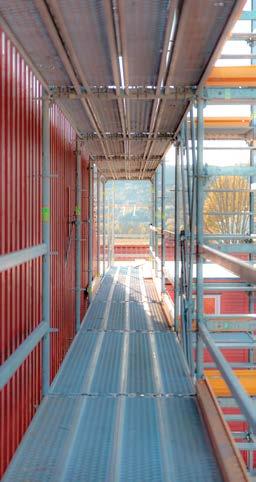


Infrastructure should be a flywheel of our country’s economic recovery.


In a bid to combat South Africa’s ongoing energy crisis, the country’s state-owned oil company, PetroSA, announced plans in March 2023 to build a network of gas-fired power plants in Mossel Bay. Furthermore, Eskom’s proposal to build a Tubatse Pumped Hydro Storage project with a generation capacity of 1.5GW received the green light from the Department of Mineral Resources and Energy in 2022.
Phase 2 of the Rooiwal Wastewater Treatment Works will involve upgrading the plant’s treatment capacity by 80-million litres per day of wastewater, coupled with the desilting of sludge at the Leeukraal dam. The proposed Amathole Water Bulk Supply Augmentation Programme targets the improvement of water resource availability and is set to gazette progress on the municipalities’ water scheme project and infrastructure upgrades.
Multi-billion-dollar Special Economic Zones (SEZs) in the municipalities of Nkomazi and Namakwa are expected to significantly stimulate economic activity, industrial development, trade and job creation in Mpumalanga and Northern Cape, respectively. The Nkomazi SEZ aims to stimulate primary agricultural production and agro-processing, while the Namakwa SEZ seeks to drive economic growth in one of South Africa’s most mineral-rich areas.
According to Mameetse Masemola, acting head of ISA, $5.7-trillion is required to close the infrastructure investment gap in South Africa by 2050. “Our mandate is to close the infrastructure investment gap. Our work is to ensure projects are viable and bankable while ensuring alignment with the Infrastructure Development Act. We are also prioritising private-public partnerships, and at the same time, working with authorising departments to unblock project rollout bottlenecks” said Masemola.
Among the Strategic Integrated Projects (SIPs), the energy portfolio has the biggest project pipeline, covering transmission, gas, renewables and green hydrogen and comprising more than 100 projects amounting to R240-billion. The green hydrogen programme, estimated at R300-billion and including 14 projects, is an important part of the country’s just transition. Almost 95% of projects deployed have been private sector-led, including renewable energy projects developed under South Africa’s Renewable Independent Power Producer Programme (REIPPP), Embedded Generation Programme and Just Energy Transition Programme. Of the energy sector projects, 25 are under construction under Bid Window 5 of REIPPP, with five having reached financial close.
Commenting on ISA’s current and future project pipeline, Masemola stated that the agency has secured R600-million from the South



Project preparation is key to developing a viable project pipeline.

SIDSSA 2024 was organised by the Investment and Infrastructure Office under the Presidency, in collaboration with the Association of African Exhibition Organisers. The National African Federation for the Building Industry joins as an association partner, while the DBSA is the official sponsor of the event.
African Treasury to fund projects with a high GDP impact over the next three years and which have not attracted funding in previous years.
“We have mobilised R25-billion through the National Treasury, which we will use to raise over R70-billion from the private sector to fund infrastructure projects. We are ready to engage with investors to fund water, human settlement, logistics and energy projects,” added Mohale Rakgate, head of the South Africa Infrastructure Fund.
The project pipeline is presented to potential investors by the Development Bank of Southern Africa (DBSA) and similar institutions, who get the projects off the ground and ensure that the infrastructure is developed.
Through the work that has been done in transforming the infrastructure landscape, the total value of the country’s SIPs has grown from R340-billion in 2020 to R540-billion now. South Africa’s Deputy President Mashatile announced that the country currently has R233-billion worth of infrastructure projects in construction, with R170-billion worth in the procurement phase and 18 projects valued at R10-billion have been completed.





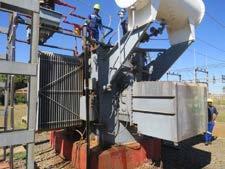
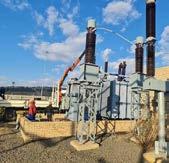
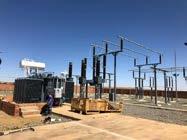



Tel: 087 897 2720 | 076 099 7150
Email: ramaja@adoforcesa.co.za
Website: www.adoforceSA.co.za
21 Dennis Pooley Street, New East End, Bloemfontein 9301
To see ourselves becoming the key pioneers of the concept of reasonable designing and constructing for our time and the future, thus becoming the leader in the electrical contracting field.
Visionary
To promote designing and constructing approaches that allow the participation of stakeholders and leading them to their future.
To be part of the dream of our clients and other stakeholders and inspire them to achieve more.
Leadership
To be strategic partners to our clients in the planning and constructing the roadmap to achieving their endeavours.
 Lucas Ramaja Dingaan Director
Lucas Ramaja Dingaan Director

Ecological economics focuses on the connection between humans and the natural environment (their actual life-support system) and, unlike mainstream economics which often prioritises efficiency and growth, it focuses on sustainability, development and the interplay between economic processes and physical reality.
BY LLEWELLYN VAN WYK, B. ARCH; MSC (APPLIED), URBAN ANALYSTKey aspects of ecological economics that have a bearing on infrastructure development could be stated as follows:
1. Nature-centred perspective. Ecological economics treats the economy as a subsystem of Earth’s larger ecosystem. It argues that the human economy is embedded in nature, and economic processes are biological, physical and chemical processes and transformation. 1 It recognises that human activities have a significant ecological footprint , impacting natural resources and generating waste .
Cities account for 80% of global GDP and will host 75% of the world’s population by 2050. 2 Between now and 2030, 1.5-million people are expected to arrive in urban areas every week. 3 Climate change is one of the indirect impacts of urbanisation and accounts for 11% to 16% of global biodiversity loss. 4 Without substantial transformation of the paradigm of urban development, urban expansion equates to increased greenhouse gas emissions, more climate change impacts and increased biodiversity loss.
2. Limits and opportunities. Unlike traditional economics, ecological economics acknowledges the limits of economic growth and the opportunities for sustainable development. It emphasises the importance of scale, distribution as well as the role of natural and social externalities 5
Business as usual is no longer an option – 44% of global GDP in cities is estimated to be at risk of disruption from nature loss. 6 Between 1990 and 2015, the urban population increased an average of 1.9 times; in the same period, the urban footprint increased an average 2.5 times. 7 Not surprisingly, urban areas are responsible for over 75% of global carbon emissions. 8
3. Intergenerational equity. Issues related to intergenerational equity, irreversibility of environmental change , and uncertainty of long-term outcomes guide ecological economic analysis and valuation. 9 Climate action failure, extreme weather and biodiversity loss have been ranked as the top three risks humanity will face in the next 10 years. 10 More than 1.4-billion people living in the world’s largest urban centres are at high or extreme risk of environmental disaster. 11 These impacts, resulting from actions of this and past generations, will lock in impacts on many future generations.
4. Normative approach. Ecological economists challenge mainstream economic approaches, such as cost-benefit analysis ,

The development and maintenance of the constructed ecosystem (infrastructure) is reductive.
by asserting that economics is inherently normative (prescriptive) rather than purely descriptive . They propose alternative methods, such as positional analysis , which incorporates time and justice considerations. ,12,13
Positional analysis is much like a traditional SWOT analysis where the strengths, weaknesses, opportunities and threats associated with a particular action are assessed. It provides a more structured approach to understanding the current context and making informed decisions to achieve desired outcomes. This will involve gathering data, conducting assessments and identifying key factors influencing the situation. More crucially, it will evaluate impacts across a wider canvas of issues including the natural and social environments, over much longer time frames, and determine who the beneficiaries will be and who stands to lose.
A classic example of how this is not done is the conventional approach to road building. A traditional cost-benefit analysis will look at the cost of the road versus the benefits to the users and to the local economy. It will not include in its assessment the impact of the road on the natural environment (beyond a very narrowly frames environmental impact study) and the concomitant immediate biodiversity loss, the ongoing biodiversity loss from emissions associated with transport and the impact of the road on areas it cuts across. Roads also act as social barriers in many ways, including physical barriers; cutting off access to resources; creating a divide in access to transportation; raising safety concerns as well as creating psychological barriers influencing perceptions of belonging and identity.
5. Shared perspectives. Ecological economics shares common ground with fields like feminist economics , emphasising sustainability, justice and care values. 14 It also includes a concept known as eco socialism which refers to the relationship between capital and ecology. 15 Whereas eco socialism places more value on the “commons” by emphasises the need for a fundamental restructuring of society to achieve a more equitable distribution of wealth and resources while ensuring the protection of the environment, typical infrastructure investment is more narrowly focused on the benefits to the investor. A highly visible example of this is the minimal contribution new buildings make to adjoining properties and the public realm.




I previously referenced the work of ecological economists Malte Faber and Robert Costanza, particularly the emphasis they placed on its focus on nature, justice and time. They stressed issues of intergenerational equity, irreversibility of environmental change, uncertainty of long-term outcomes and sustainable development guiding ecological economic analysis and valuation.
Robert Costanza argues that cities can be understood as complex and emergent social-ecological-technological systems (SETS) where social includes issues such as culture, economics and governance; ecological embraces climate and the biophysical and technological includes engineered and built environment dimensions. 16 The authors of the cited paper provide insights on transdisciplinary approaches for developing transformation strategies for complex urban systems and related enablers from local-to-national scales.
Of importance to this think piece is the context sketched by the authors of what transformation may mean in an urban context: they state “transformation means the changes needed to address a significant gap between longer-term societal aspirations and the current status, typically requiring simultaneous change across multiple interdependent urban sub-systems (for example, across land use, transport, energy and environmental systems to achieve interlinked outcomes); and enablers refers to the underpinning urban capacities necessary to support multiple such transformation”. 17
In a study done in 1996, Costanza emphasised the need to bridge the gap between human activities and ecological systems, advocating for an integrated approach to economics and environmental science.18 This was followed up in 1997 with a study co-authored by Constanza and others which quantified the economic value of ecosystem services and highlighted their importance for human well-being. 19
Constanza’s categorisation of SETS correlates well with the human ecological model I have included (Figure 1). In mainstream economics the three core components would typically be described as natural, social and infrastructure capital, akin to an asset. However, the ecological lens requires that they be understood as ecosystems –intricate communities where life and environment coexist, shaping our planet’s diversity and balance.
Ecologists show great interest in the transition zones between biomes as it is here that a unique environment is created. Similarly, it is within the interstitial spaces (transition zones) between the natural, social and constructed ecosystems that the challenges of infrastructure development come into sharp focus. It is possible to view these interstitial spaces through several lenses: for purposes of this think piece, I am using the exchange of goods and services between the ecosystems.
Figure 1 identifies three interstitial spaces: natural/constructed, natural/social and constructed/social.


Not surprisingly, urban areas are responsible for over 75% of global carbon emissions.




1. Natural/constructed interstitial zone. The development and maintenance of the constructed ecosystem is dependent on resources drawn down from the natural ecosystem. This includes materials such as cement, metals, sand, timber, clay, aggregate, among others. Apart from timber, most of these resources are finite and are accessed through extractive processes. The conversion of these raw materials into finished products is a second layer of resource use (energy). Consequentially the ecological footprint is significant and multifaceted. The extractive industries contribute to climate change through greenhouse gas emissions which affect weather patterns, ecosystems and extreme weather-related events.
Activities associated with extractive industries often lead to habitat destruction and irreversible environmental change . The extractive industries release pollutants into water bodies, affecting aquatic life and human health for generations to come. Extractive activities rely on significant water resources for mining and other extractive processes. Mining, quarrying, and deforestation disturb soil structures, leading to erosion and reduced soil fertility . Often the ecological impacts fall disproportionately on adjacent local populations (often poorer communities) and impacts on future generations to come.
In addition, the expansion of the constructed ecosystem through infrastructure construction (buildings, roads and related infrastructure) into natural ecosystems depletes that biologically productive area




of that ecosystem by reducing biodiversity and ecological function. Some progressive countries are recognising this relationship and are introducing mechanisms to change it: England is launching a biodiversity credit scheme that will require all new road and housebuilding projects to benefit nature, rather than damage it. The “nature market”, called biodiversity net gain (BNG), requires all new building projects to achieve a 10% net gain in biodiversity or habitat, either on the site or somewhere else. 20
2. Natural/social interstitial zone. This zone provides all the ecological goods and services that all living species on the planet rely on, including clean air, fresh water, food, fibre, biomass, genetic resources, biodiversity maintenance, decomposition of wastes, soil and vegetation generation and renewal, pollination of crops and natural vegetation, groundwater recharge through wetlands, seed dispersal, greenhouse gas mitigation, medicines as well as cultural and spiritual value, to name a few. The impact of extractive activities and the operation of the constructed ecosystem depletes and degrades natural resources thereby undermining the ability of ecosystems to provide effective ecological goods and services.
3. Constructed/social ecosystems interstitial zone. As with ecological goods and services, infrastructure provides goods and services to communities. However, this is often uneven: according to Statistics South Africa (January 2022) in South Africa approximately 23% of households do not have access to piped water in their









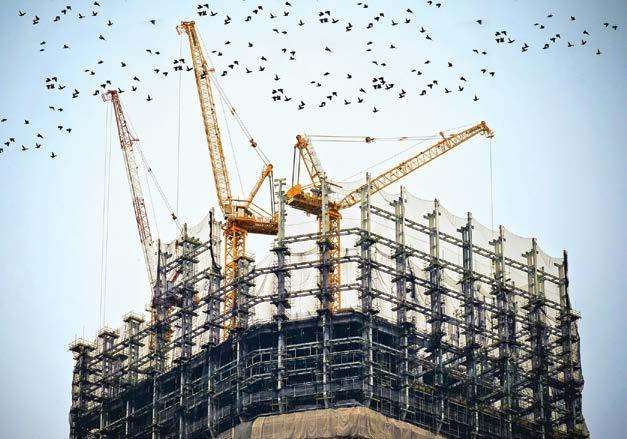
dwellings. As of the most recent data, 2.2-million households in South Africa live in informal dwellings. Approximately 37% of South Africa households do not have access to a flush toilet inside their dwellings. Not surprisingly, this burden falls exclusively on the poor.
On almost all counts the current infrastructure paradigm is diametrically opposed to the key factors of ecological economics.
The development and maintenance of the constructed ecosystem (infrastructure) is reductive, ie the exchange of goods and services between itself and the natural and social ecosystems diminishes biological and sociological functionality over time. Every metre of road, wall, pipe, cable and all other constructions requires resources derived from the natural ecosystem for construction and maintenance
thereby reducing the resource quantity and quality, as does every litre of fuel or water consumed. The exchange is also unequitable: the flow is one-dimensional (from the resource base to the resource consumer), and benefits of that resource use is unequally divided among population groups and prejudicial to future generations.
The often-repeated claim that “infrastructure investment is key to the future of cities” is not defensible if that investment is out of line with ecological economics: so too, is the call for “infrastructure based on quality-cost-selection” – it is so much more than this.
It is of critical importance that decisionmakers and participants active in the South African National Infrastructure Plan stop and review their investment paradigm against the key factors involved in ecological economics. Failure to do so will unquestionably result in investment continuing its damaging influence on natural, social and constructed ecosystems.

Cities account for 80% of global GDP and will host 75% of the world’s population by 2050.

3 Ibid.
4 Ibid.
5 Constanza, R., 2010. “What is ecological economics?” Yale Insights, May 11, 2010.

6 WEF 2022. BiodiverCities by 2030: Transforming Cities’ Relationship with Nature. World Economic Forum in collaboration with Arup and AphaBeta.
7 Ibid.
8 Ibid.
9 Malte Faber. 2008. “How to be an ecological economist.” Ecological Economics 66(1):1-7.
10 WEF 2022. BiodiverCities by 2030: Transforming Cities’ Relationship with Nature. World Economic Forum in collaboration with Arup and AlphaBeta.
11 Ibid.
12 Mattson L. 1975. “Book Review: Positional Analysis for Decision-Making and Planning by Peter Soderbaum.” The Swedish Journal of Economics.
13 Soderbaum, P. 2008. “Understanding Sustainability Economics.” Earthscan, London. ISBN 978-1-84407-627-7. pp.109-110, 113-117.
14 Aslaksen, I.; Bragstad, T.; Ås, B., 2014. “Feminist Economics as Vision for a Sustainable Future”. In Bjørnholt, Margunn; McKay, Ailsa (eds.). Counting on Marilyn Waring: New Advances in Feminist Economics Demeter Press/Brunswick Books. pp. 21-36.
15 Erald, K., April 2021. “The Physics of Capitalism”, Sustainable Human Development, The Jus Semper Global Alliance.
16 Webb, R., O’Donnell, T., Auty, K., Bai, X., Barnett, G., Costanza, R., et al, 2023. “Enabling urban systems transformation: co-developing national and local strategies.” Urban Transformations, (2023) 5:5.
17 Ibid.
18 Constanzs, R., 1996. “Ecological economics: reintegrating the study of humans and nature.” Ecological Applications 6:978-990.
19 Constanza et al., 1997. “The value of the world’s ecosystem services and natural capital.” Nature 387:253-260.


20 Weston, P., 2024. “England brings in biodiversity rules to force builders to compensate for loss of nature.” Downloaded: February 13, 2024.
At Masslift Africa, our commitment goes beyond just business – we are driven by a sense of purpose. With the Mitsububishi Counterbalance Electric Forklift, we are not just revolutionising operations; we are electrifying sustainability standards in the industry.
We serve our customers across various industries with innovative solutions while prioritising social corporate investments (SCI). Alongside our focus on health and safety, we ensure that our products not only benefit our customers but also the environment. One such environmentally friendly solution is the Mitsubishi Counterbalance Electric Forklift, a testament to our dedication to sustainability.
The Mitsubishi Counterbalance Electric Forklift distinguishes itself in the market with a range of advanced features geared towards sustainability and efficiency. Users benefit from reduced downtime, less maintenance, and more power, ensuring maximum productivity and reliability in their material handling operations.
ECO-mode features
At the core of Masslift’s commitment to sustainability lies the ECO-mode embedded in the Mitsubishi Counterbalance Electric Forklift. This isn’t just a feature; it’s a game changer. The ECO-mode optimises forklift performance, syncing speed and power with energy conservation, ensuring your operations are efficient and ecoconscious. The ECO-mode button becomes your conductor’s baton, leading your forklift through a harmonious blend of performance and sustainability. Speed and power are at your fingertips, while the promise of saving energy ensures that every lift is a step towards a greener future.
Masslift’s Mitsubishi Counterbalance Electric Forklift is equipped with advanced lithium-ion batteries, empowering your forklift to navigate power disruptions easily. The integration of lithium-ion batteries not only enhances reliability and efficiency but also reduces environmental impact by eliminating emissions and minimising energy consumption, making it an environmentally friendly choice for sustainable operations.
Key features
Low centre of gravity. The Mitsubishi Counterbalance Electric Forklift boasts a low centre of gravity, enhancing stability and safety during operation, especially when navigating tight spaces or carrying heavy loads.
Auto torque up and wide visibility. With features such as auto torque up for dynamic torque adjustment and wide visibility for improved sightlines, operators can manoeuvre with precision and confidence, increasing productivity while reducing the risk of accidents.

The Mitsubishi Counterbalance Electric Forklift represents a significant step forward in our commitment to sustainability and innovation at Masslift Africa.
Safety cruise and travel hydraulic interlock. Safety features like safety cruise, which limits speed and stabilises the forklift even when pedals are released, coupled with the travel hydraulic interlock, ensuring operator safety by disengaging movement when the operator is not seated, enhance overall workplace safety.
“The Mitsubishi Counterbalance Electric Forklift represents a significant step forward in our commitment to sustainability and innovation at Masslift Africa. Our partnership with Mitsubishi enables us to offer cutting-edge solutions that not only enhance operational efficiency but also contribute to environmental conservation. The integration of features like ECO-mode and lithium-ion batteries underscores our dedication to providing eco-conscious material handling solutions to our customers,” says Kurt Pacak, national sales manager at Masslift Africa.
Join Masslift Africa in revolutionising your material handling operations. Discover the unparalleled performance and sustainability of the Mitsubishi Counterbalance Electric Forklift.
Contact us today to elevate your operations to new heights of efficiency and environmental responsibility.
Phone: 011 786 8524
Email: sales@mlift.co.za
Website: www.mittsubishiforklifts.co.za



Professor Linda Godfrey is strengthening the evidence base to inform the transition to a more circular South African economy. She will be a keynote speaker at the ISWA2024 World Congress on 16-18 March at CTICC, Cape Town. Green Economy Journal met up with the professor.
The waste sector is a very broad sector, encompassing the management of many different waste streams, from municipal waste which includes paper and packaging waste, and food and garden waste, to industrial waste streams such as agri- and agroprocessing waste, to hazardous waste streams, such as healthcare risk waste.
Municipal waste is the most “visible” of the waste streams as we see it every day as consumers and residents. Having worked in the South African waste sector for near on 30 years, I have had the opportunity to see how this sector has changed, how it has stayed the same, and in some instances, how it has deteriorated.
We face a significant municipal waste problem across our cities and towns in South Africa: the increase in illegal dumping and littering, failure in waste collection in many towns, failure to roll out separation at source systems across all metropolitan municipalities, secondary cities and large towns as well as non-compliance in the operation of many of our waste disposal facilities. According to latest General Household Survey by StatsSA, “the percentage of households whose refuse was removed at least once per week dipped below 60% for the first time since 2008. This decline was accompanied by an increase in the percentage of households that reported using their own refuse dumps”.
However, the difference in waste collection services between urban and rural areas is dramatic, with only around 12% of households in rural areas receiving a regular weekly waste collection service. It’s not surprising then that this results in increased uncontrolled dumping and open burning of waste. The intentional burning of waste appears to have become a regular management practice for many of our municipalities as a way to
manage their waste, causing significant air pollution and potential human health issues for workers and local communities.
We’ll be discussing this issue in much greater detail at the upcoming ISWA2024 Conference in Cape Town. It will be the first time this international waste conference will be held on the African continent.
There is also good news from the waste sector. We are seeing the adoption of alternative waste treatment technologies, albeit slower than we’d like given the fact that the waste hierarchy has been embedded in South African policy since 1999. But because South Africa is about 20 to 30 years behind the global north in the management of waste, we have the opportunity to drop technologies into South Africa quickly, with a focus on technology localisation and adaptation – if we have the right enabling environment, appropriate policy and enforcement of that policy on both the public and private waste sectors.
We’re also seeing innovative new technologies emerge out of our universities and science councils. This has been a strong focus of the Department of Science and Innovation through the national Waste Research, Development and Innovation (RDI) Roadmap; to support the diversion of waste away from landfill towards value-adding opportunities, including prevention of waste and the optimised extraction of value from reuse, recycling and recovery, to create social, economic and environmental benefit.
You led the compilation of the Waste RDI Roadmap for South Africa (2015-2025). What was the roadmap’s objective? Did it meet its objective? What happens after 2025?
Over the last nine years of implementation, the Waste RDI Roadmap has funded near on 60 research grant projects which has built much needed skills for the sector and has produced invaluable evidence




Professor Linda Godfrey is a principal scientist at the CSIR and an Extraordinary Professor at North-West University, South Africa. She holds a PhD in Engineering. Professor Godfrey has provided strategic input to a number of local, regional and international waste and circular economy initiatives for the United Nations, European Union, World Bank, South African government, business and academia. She lectures internationally on solid waste management and the circular economy in the context of developing countries. She has published extensively in the field.
Professor Godfrey is a keynote speaker at the ISWA2024 World Congress in Cape Town. The topic of her presentation is “What will it take to fix South Africa’s broken waste management system?”




South Africa has 18 critical and strategic minerals, five of which have less than 50 years of economically viable mining remaining.

The informal recycling sector has experienced substantial growth over the years. Waste is not waste if it has value: value for people, the economy, and the environment.
Covering significant distances on foot every day, collectors weave through suburbs, cities and communities to retrieve ‘waste’ in return for cash. Recycling ensures that valuable materials are diverted away from landfills, which are rapidly reaching capacity. These materials are sorted and sent to recycling mills and factories for conversion into usable and commercially viable products.
Recycling collectors do not take all
Several recyclables are like gold for waste collectors, but unfortunately just because it’s recyclable or recycled in South Africa, does not mean a waste collector will take it. They will only take items for which they will earn money, and they will not take items that they cannot sell or which are too heavy to pull over long distances.
With a bit of kindness and thought about your own refuse habits, you can make their work a little quicker and easier.
Keeping recyclable paper clean and dry is paramount. As a raw material that can be used in new paper products, it should not be contaminated by wet and rotting food waste, liquids or pet waste.
Separate recyclables And food/wet waste.
Get a bin, box or bucket for your recyclables. Recycling containers don’t need to be fancy or expensive.

Keep paper recyclables clean and dry.
Get the family involved and make sure everyone knows what is recyclable. 1.
Give plastic, glass and cans a light rinse if needed, using dirty dish water.
to guide and inform the sector, and innovative technologies, many of which are now being further developed or implemented together with private sector partners.
For example, we’re seeing really interesting and beneficial research out of the Council for Scientific and Industrial Research’s (CSIR) Biorefinery Industry Development Facility (BIDF) on the recovery of high-value products from forestry, pulp and paper sector waste streams. These technologies have the potential to reduce the environmental burden on industries and to unlock new enterprises.
The Waste RDI Roadmap, as a strategic document to guide the investment and direction in waste research, development and innovation in South Africa, comes to an end now in 2025. But we won’t stop what we’re doing. There’s still so much work to be done in this space. Instead, the activities of the Waste RDI Roadmap are being incorporated into the Department of Science and Innovation’s new Science, Technology and Innovation for a Circular Economy (STI4CE) Strategy. This new strategy is currently being finalised in response to government’s new STI Decadal Plan (2022-2032) which recognises the circular economy as a growth opportunity for South Africa.
Because most of the Waste RDI Roadmap research is publicly funded, the outputs are made available on the Waste RDI Roadmap website for everyone to access. We hope that business will engage with this research, and with our research community, to use this evidence and to adopt these technology solutions into their business practices, thereby uplifting the entire sector.
What does the circular economy mean for South Africa as a developing country?
This concept of a circular economy – to design out pollution and waste, to keep products and materials in use and to regenerate natural systems – has gained a lot of traction globally and locally over the past five or so years. There is still, unfortunately, this misnomer that the circular economy is just about waste, or worse still, that it’s a synonym for recycling.

Waste is a logical entry point into the circular economy, a “low hanging” fruit in terms of implementing circular solutions, but there is so much more to the circular economy than that. The circular economy is really about sustainable resource management. I would go so far as to say that the circular economy is about national
The circular economy is about national resource-security in support of socio-economic development.
resource-security in support of socio-economic development –through sustainable resource utilisation. This is why transitioning to a more circular economy is no longer a nice-to-have, but an economic, social and environmental imperative for every country.
Research by the CSIR has shown that resource scarcity is a driver for South Africa to transition to a more circular economy. We’ve seen the impacts of energy insecurity on the national economy, and water insecurity on regional and local economies. Available information suggests that South Africa has 18 critical and strategic minerals, five of which have less than 50 years of economically viable mining remaining, assuming no new reserves are found. And unfortunately, more than 90% of these minerals are exported leaving us with little ability to recover them at end of product life and reintroduce these resources back into the South African economy. Materials insecurity, particularly for non-renewable resources, is therefore a reality for South Africa, as it is for all countries. I believe though, that the circular economy also presents significant opportunities for South Africa and Africa – a different kind of growth path for the continent – a more sustainable, low-carbon, efficient and sufficient growth path that meets the needs of all, and with it the potential to create significant jobs. And that’s incredibly exciting.
How does waste-to-energy fit into a circular economy?
This question really depends on how you define waste-to-energy (WtE). It’s a very broad term which encompasses many technology solutions, from landfill gas recovery to low temperature bio-WtE technologies such as anaerobic digestion or biogas recovery, to high-temperature thermal-WtE technologies such as incineration, pyrolysis and gasification. I do believe that bio-WtE technologies like biogas recovery from organic waste streams such as food, garden or agricultural waste is integral to a circular economy.
However, thermal-WtE technologies are really about the destruction of waste streams, the destruction of resources, either because they are not technically or economically reusable or recyclable (design flaw), or because we have failed to put the



systems in place to divert these resources back into the economy (an operational flaw). And so, I would say that destroying resources at end-of-life through thermal-WtE is not part of the circular economy. We lose the ability to return these resources – whether it be polymer, nutrients, fibre or metals – back into the economy.
There is certainly a lot of potential to introduce more bio-WtE facilities into South Africa, given that organic waste (food, garden, agricultural waste) is the single largest general waste stream produced in South Africa. It’s also a significant contributor towards South Africa’s greenhouse gas emissions, because of the aerobic and anaerobic breakdown of these organic wastes into carbon dioxide and methane (among others).
Zero organic waste to landfill policy is important in sending the right signals to the private sector which will move to adopt and invest in appropriate technologies for South Africa.
We hope that the recent gazetting of the mandatory Extended Producer Responsibility (EPR) will have the same benefits for South Africa – increased investment in appropriate technologies to beneficiate these waste streams locally and keep these resources (and associated jobs) in the country for as long as possible before they have to enter into the global market.


THOUGHT [ECO]NOMY greeneconomy/report recycle



THOUGHT [ECO]NOMY greeneconomy/report recycle


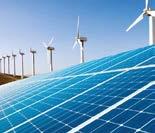

Solutions for a sustainable future | CTICC, Cape Town | [16-18 September ]
“The Institute of Waste Management of Southern Africa (IWMSA) invites you to join us for the ISWA2024 World Congress taking place for the first time on African soil. Come and experience Cape Town, South Africa’s beauty, culture and vibrance. We want you to be part of the conference’s legacy, where we move Africa, which is well resourced, from waste to wealth and help us provide solutions for a sustainable future.” Mpendulo Ginindza, IWMSA President and ISWA2024 Conference Chair
The ISWA World Congress is the foremost event in the field of solid waste management. It serves as a global assembly, featuring elevated plenary sessions, technical site visits and a rich cultural and social itinerary. Here, waste management professionals, government officials, industry leaders, policymakers, scientists and emerging professionals convene, engaging in constructive dialogues to encourage scientific and technical advancements in sustainable solid waste management.
A WASTE RESEARCH, DEVELOPMENT AND INNOVATION ROADMAP FOR SOUTH AFRICA (2015-2025) | Towards a secondary resources economy | Summary report | Department of Science and Technology | Dr Linda Godfrey, CSIR, and Michael Rivers, Mutualfruit Ltd | [November 2014]
The Waste Research Development and Innovation (RDI) Roadmap has been developed in support of strategic national priorities. The successful implementation of this 10-year plan can make a positive and meaningful contribution towards growing and transforming the South African waste sector. Developing, strengthening and embedding South Africa’s waste RDI capacity within and between research and academic institutions as well as industry and government will enable the sector to make more effective decisions, appropriate technologies and create opportunities for the export of knowhow into the African continent and beyond. Waste management is also increasingly a shared global issue. In addition to national priorities, the Waste RDI Roadmap provides significant opportunity for international collaboration and investment on shared priorities.
and Innovation | [2022]
The Decadal Plan sets out the science, technology and innovation (STI) priorities and thematic focus areas for the next decade to support the achievement of the National Development Plan objectives. It is premised on advancing a whole-of-government approach (and ultimately a whole-of-society approach) to innovation in South Africa.



The intention is to optimise synergies among STI-intensive government departments and the rest of government through joint programming and co-funding for STI priorities, and hence to ensure policy certainty to maximise the contributions of business, civil society and academia to STI initiatives and investments.
STI are recognised as core drivers of socio-economic development and improving the lives of citizens. The national system of innovation is an enabling framework and seeks to harness the diverse aspects of STI through various institutions that develop, practice or use STI.

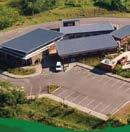



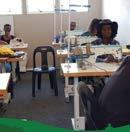


In a world where environmental sustainability is increasingly becoming a priority, businesses that innovate and champion eco-friendly practices stand out as beacons of change.BY USE-IT
Among these pioneers is USE-IT NPO, a waste beneficiation company making waves in the green economy of KwaZuluNatal (KZN). Based in Hammarsdale outside Durban, Use-IT was established as a non-profit organisation to research and develop waste beneficiation technologies with the aim of diverting waste from landfill and creating jobs in the green economy of KZN.
Through our innovative approach to recycling and waste beneficiation, USE-IT KZN has transformed waste into valuable resources and exemplified the power of sustainable business models for SMME development and job creation opportunities. The successes of the past five years underscore the effectiveness of the current strategy and set a solid foundation for future growth and impact in recycling and environmental conservation.
Founded on the belief that every piece of waste holds potential for a greener future, USE-IT embarked on a mission to revolutionise the recycling landscape in KZN communities. It remains our shared objective to nurture entrepreneurs who share our vision of achieving “zero waste to landfill”. To achieve this we developed cutting-edge technologies, world-class facilities and sustainable practices to process and repurpose these materials efficiently.
USE-IT has forged strategic partnerships with our local SMMEs and industry stakeholders, creating a robust network that facilitates the efficient collection, processing and distribution of recyclable materials. The principal focus at the centre is on green jobs and skills development.
Over the past three years, we have witnessed rampant growth in our incubation centre. This growth involves Owethu Sewing that now exports products to international markets, Home Decor, the furniture specialist and Educational Toy Project. This collaborative approach has enhanced our operational efficiency and opened new avenues for business growth and expansion. We have diligently reviewed all on-site tenants, partners and incubates to ensure their compliance with our rules, licenses and strategic SMME development objectives.
We strive to foster innovation and focus on township economies by harnessing waste as a valuable resource. USE-IT takes pride in the exceptional waste management practices and overall tidiness
of our site and communities. Our key success pilot project with Green KEY Brick served as a catalyst for environmental change beyond its operational achievements.
USE-IT has partnered on a CSIR-funded project to establish a demonstration site to produce a full analysis from materials through to the construction of a 40m 2 house. This will include application for Agrément certification, making the innovation a certified and credible green building alternative. In the last year, we witnessed remarkable progress with the Green KEY Brick project in Zambia with an off-take of 60 000 houses across 10 regions.
Through educational outreach programmes, community partnerships and corporate collaborations with the Social Employment Fund, we continue to align with our core mission of reducing waste to landfill within a circular economy framework, promoting job creation and entrepreneurship opportunities within the recycling industry.
We have collaborated with our local community waste pickers who proactively bring us waste in exchange for income. This has been one of our interventions to create jobs and support livelihoods. The community project supports part-time work since evidence shows that this enables complementary livelihood activities and pathways into entrepreneurial activity.
We are partnering with other businesses to further support schools in our area through a school recycling programme. USE-IT contributed to three schools in a local ward in the Mpumalanga township of Hammarsdale by hosting schools at our facilities.
As the world grapples with the challenges of waste management, USE-IT stands as a shining example through innovation and a commitment to sustainability in our KZN townships. By revolutionising waste beneficiation and recycling, USE-IT’s plan is to divert waste from landfills and be more aggressive in creating economic opportunities and promoting environmental stewardship.
We thank our long-serving and valued funder, eThekwini Municipality, for its support throughout our journey. Without your financial contribution, we would not be where we are. Partner with USE-IT for social change. Waste has value, just USE-IT.
I f y o u r c o m p a n y i m p o r t s o r m a n u f a c t u r e s E l e c t r i c a l a n d
E l e c t r o n i c E q u i p m e n t , L i g h t i n g , P a p e r a n d P a c k a g i n g P r o d u c t s , B a t t e r i e s , o r L u b r i c a n t O i l f o r s a l e i n S o u t h A f r i c a , i t m u s t c o m p l y w i t h t h e 2 0 2 0 E x t e n d e d P r o d u c e r R e s p o n s i b i l i t y ( E P R )
R e g u l a t i o n s .
W H A T D O E S T H E E X T E N D E D P R O D U C E R
R E S P O N S I B I L I T Y ( E P R ) R E G U L A T I O N S S A Y ? CIRCULAR
P r o m u l g a t e d i n 2 0 2 1 b y t h e D e p a r t m e n t o f F o r e s t r y , F i s h e r i e s & E n v i r o n m e n t ( D F F E ) , t h e E P R r e g u l a t i o n s h o l d y o u , t h e p r o d u c e r , a c c o u n t a b l e f o r t h e e n t i r e l i f e c y c l e o f y o u r p r o d u c t s , f r o m c o n c e p t i o n t o p o s t - c o n s u m e r w a s t e d i s p o s a l .
HOW CAN WE HELP YOU?
W e w i l l p r o v i d e y o u r c o m p a n y w i t h a
c o m p r e h e n s i v e s o l u t i o n t o m a n a g e y o u r E P R
E N E R G Y
d u t i e s .
S i m p l y r e p o r t y o u r p r o d u c t d a t a t o u s , a n d w e ' l l
t a k e c a r e o f t h e r e s t , b y r e p o r t i n g t o t h e D F F E
a n d m a n a g i n g t h e r e c o v e r y a n d r e c y c l i n g o f
y o u r p o s t - c o n s u m e r w a s t e , a m o n g o t h e r
r e q u i r e m e n t s . W e ' v e g o t y o u c o v e r e d w i t h o u r
n a t i o n w i d e t a k e - b a c k s c h e m e t h a t f o c u s e s o n
e l e c t r o n i c e q u i p m e n t , b a t t e r i e s , l i g h t i n g a n d
l i g h t i n g e q u i p m e n t , p r o d u c t p a c k a g i n g , a s
w e l l a s l u b r i c a n t o i l
TAKE ACTION! LET US HELP YOU D o n ' t l e t n o n - c o m p l i a n c e p u t y o u r b u s i n e s s a t r i s k o f f i n a n c i a l a n d l e g a l c o n s e q u e n c e s .
The onus is no longer on your customers to ensure that your products are diverted from landfills. According to the Extended Producer Responsibility regulations, the responsibility is yours. Green Economy Journal speaks to the CEO of Circular Energy, Patricia Schröder.
Please provide an overview of Circular Energy NPC. Circular Energy is a non-profit company (NPC) and a Producer Responsibility Organisation (PRO) registered with the Department of Forestry, Fisheries and the Environment to operate compliance schemes under Section 18(1) Extended Producer Responsibility Regulations (2020) of the National Environmental Management: Waste Act, 2008 (Act 59 of 2008) (NEMWA). Circular Energy is registered to provide its services to the following sectors:
• Electric and electronic equipment [19/7/6/E/PRO/20211012/006]
• Lighting and lighting equipment [19/7/7/L/PRO/20220808/031]
• Paper and packaging [19/7/5/P/PRO/20220808/032]
• Portable batteries [19/7/5/P/PRO/20230428/039]
• Lubricant oil [19/7/7/L/PRO/20230816/048]
What does Circular Energy do?
Circular Energy assists its members in terms of their compliance obligations for their identified products as specified in the EPR regulations and sector notices. Among other compliance requirements, Circular Energy manages a nationwide take-back scheme for the collection, transportation, recovery and recycling through environmentally sound management principles of its members’ end-of-life products.
Consumer and corporate behaviour needs a mind-shift change to be more active in supporting recycling and waste reduction initiatives.
Please discuss the importance of diverting e-waste via the correct channels to the correct facilities.
eWaste is one of many waste streams covered by Circular Energy. As a holistic viewpoint for all waste streams, diverting waste via the correct channels to the correct facilities, has the following benefits:
• Diverting waste from overburdened landfills
• Recovery of resources for re-use in secondary markets whether as products or recovered raw materials
• The hazardous and/or toxic properties of waste products are managed in an environmentally sound manner at accredited and licenced waste management facilities, as verified by Circular Energy across South Africa
• All recovered and recycled products are monitored and reported with track and trace methods
• The elimination of harm to the environment, communities and natural ecosystems
• The creation of business opportunities and employment
• Innovation is enabled
• Contributing to skills development

What are the biggest challenges for the sectors in South Africa?
Bad practice in terms of waste management by companies or individuals that only care about quick financial gains which results in pollution, environmental degradation and health risks to communities.
Consumer and corporate behaviour needs a mind-shift change to be more active in supporting best practice recycling and waste reduction initiatives.
What gives Circular Energy the edge?
Circular Energy has established a successful nationwide consumer/ household and business collection system for small electric and electronic waste, household lighting and waste batteries at more than 600 retail outlets that are collected for environmentally sound processing and recycling.
The collection request capability on Circular Energy’s website for businesses and consumers enables a convenient collection system directly from households and businesses for smaller and larger items such as fridges and washing machines etc.
This has resulted in the diversion of significant tonnages of electrical or electronic waste, lighting and battery waste from landfills, and ensuring best environmental practices for managing these waste streams. The materials recovered from the recycling processes are used in secondary markets, thereby supporting circular economy principles. Additionally, Circular Energy’s corporate differentiators include:
• Operating an EPR system in compliance with rigorous governance principles:
✓ Transparency
✓ Consensus orientated
✓ Equitable and inclusive
✓ Responsive
✓ Follow the rule of law
✓ Accountability
• Supplying and acquiring the necessary resources and knowledge to manage every aspect of business performance.
• Respecting the privacy of data subjects under the Protection of Personal Information Act and Promotion of Access to Information Act.
• Setting ground rules for all that we do as an organisation through ethical principles.
• Promoting and putting into practice the concepts of the circular economy, carbon footprint reduction and minimisation of all waste types.
• Promoting and supporting best practices for products and service life cycles.
• Prioritising research, innovation and implementation of waste. programmes through supporting technology. This is to reduce the impacts of general and hazardous waste in the sectors serviced by diversion from landfills.
• Implementing and enhancing systems to recognise, manage and monitor health, safety and environmental risks throughout the company’s value chain.


Man-made open-loop systems are centuries old – converting natural resources into energy and materials in a linear process of make, use and dispose. These systems fuelled the Industrial Revolution, which elevated the quality of life and economic condition of people globally. Yet, these processes generate huge amounts of waste and are now considered unsustainable.
BY KEARNEY CONSULTINGPlastics, along with energy, are central to this issue given the waste and emissions created in the linear systems used for their production. Images of plastic waste in beautiful natural ecosystems such as beaches and oceans along with information about the potential environmental impact have prompted a growing and emotional public call for action.
Despite the many applications and benefits, including being versatile, lightweight, cost-effective, safe and clean; plastic materials – more than $500-billion of global product value – are now more vulnerable than ever to public and government scrutiny. 1 To respond, plastics producers and consumer companies are taking a range of actions, from redesigning their products to reduce how much plastic they use and opting for renewable sources instead of fossil-based feedstock to reusing and recycling.
Recycling through viable circular chains has the power to stem the negative tide and secure the use of plastics. For chemical and consumer companies on the journey to address the opportunities and challenges of the circular economy, success will depend on recognising the unique characteristics of the plastics value chain, understanding the forces that will drive future models and planning an appropriate course of action.
In its simplest form, a circular system has inputs that remain in the system and are reused rather than expelled as waste. In a circular economy, the value of products, materials and resources is maintained in the system for as long as possible, and waste is minimised. These closed-loop systems are easily found in nature
(think water and biomass) but are less prevalent in man-made systems. Converting fossil fuels and minerals into energy and materials is a prime example of man-made open-loop processes in which finished products are discarded or accumulate in unwanted forms, such as CO 2 emissions.
Exceptions do exist. Notably, 50% to 90% of aluminium is recycled (depending on the application), and other metals such as steel, copper and zinc also have recycling rates above 50%.2 Nevertheless, only 9% of all human-produced end-of-life materials and energy are recycled. For plastics, that rate is 20%, with polyethylene terephthalate (PET) being among the highest at 29% to 58% across the US and Europe, leaving a significant opportunity on the table for recycling. 3
What is special about plastics, and what are its circular scenarios?
Chemical products, including plastics, have improved the quality of life for people across the globe over the past century. Useful properties and versatility combined with low cost have allowed these products to proliferate and deliver significant benefits to consumer convenience, industrial processes, logistics and public health. Unfortunately, these benefits have come with an environmental cost. Packaging, for example, accounts for at least a third of plastics usage and presents one of the most acute challenges for closing the loop.
To understand the potential path to creating a circular value
chain for plastics, it’s helpful to look at other materials that have similar usage patterns. For example, the aluminium value chain highlights some of the potential success factors while also revealing the unique factors that must be addressed for plastics. Historically, aluminium was mostly used for durable products in construction, transportation and other heavy industries. Although aluminium packaging had existed before, it accelerated in the 1960s with the explosive growth of beverage cans. As aluminium entered the public consciousness, with it came a call for recycling. The aluminium recycling process begins with collecting scrap at the point of use followed by aggregation, melting, purification and remixing with virgin feedstock (Figure 1).
The main lessons from this closed-loop process include valuation of the scrap material to incentivise its capture, a mixed mechanical and chemical recycling value chain, purification technology and favourable economics that create a cost advantage for using recycled material rather than virgin feedstock.
Recycling value chains for plastics are less well-established than those for metals. Single-material circular value chains, which we refer to as small-loop scenarios, are presently the most common, such as polyester material in PET bottles. The path forward for greater circular flows of plastic will involve a combination of plastics-specific small-loop scenarios and multiple-plastic, large-loop scenarios (Figure 2).





The process of “denormalising” plastic waste will take time and coordinated effort, but it has begun.

The small-loop scenario would involve many separate plastic-specific circular value chains, such as one for polyester, one or many for polyolefins (polyethylene and polypropylene) and one for polyvinylchloride. This would require collecting plastic waste and then separating it into district streams based on the material type for further processing to enable its reuse in the value chain at near-similar value to its virgin equivalent and at a similar point, for example as a polymer product.
The large-loop scenario would also involve collecting waste, but it would involve non-material-specific circular value chains that can handle multiple types of plastics. This large-loop scenario would rely to a much greater degree on chemical instead of mechanical recycling and would return material into the value chain further upstream as feedstock or monomer.


Both scenarios have distinct characteristics and requirements (Figure 3). Material companies will need to consider both scenarios when assessing the opportunities and risks of circular solutions for their product value chains.
Aluminium recycling is a useful example of a circular ecosystem for materials that are highly engineered and processed. To understand how this process evolved, consider the four forces that have transformed the materials sector. In his book More from Less , research scientist Andrew McAfee chronicles how these forces have influenced the production and consumption of many material value chains in the US and the UK and led to widespread dematerialisation. Although plastics recycling hasn’t directly contributed to dematerialisation,



these same four forces are likely to define the shape and rate of development of a circular chain:
Economic value. In the case of aluminium, the recycled material was sufficiently valued (relative to virgin feedstock) to attract funding for the required infrastructure and technology. Capital markets and companies will continue to be the most effective, efficient and reliable sources of funding for driving the change.
However, plastics require a significant investment for both mechanical and chemical recycling as well as the associated logistics infrastructure for collection and sorting. In addition, plastics require a substantial amount of coordination of incentives along the value chain from consumers to collectors to sorters to enable the recycled product to continue to flow.
Technological progress. Infrared and magnetic technologies to remove plastic and steel were important capabilities for aluminium recycling, and the widespread availability of these technologies certainly accelerated adoption of the process. For plastics, the advancement of mechanical technology (such as sorting, separation, cleaning and impurity extraction) and chemical technology (such as depolymerisation, including enzymatic, cracking and pyrolysis) will govern the rate and the extent of change.
Public awareness and behaviours. A vital part of consumers choosing to recycle aluminium was their awareness of its recyclability and their willingness to separate cans from the rest of their trash. As a result, 60% to 90% of aluminium cans, depending on the country, are recovered and recycled. 4 Inspired by the images of waste, many consumers are now calling for less plastic waste, but the public must broadly change their behaviours and overcome their love of disposability. The process of “denormalising” plastic waste will take time and coordinated effort, but it has begun.
Responsive government. To encourage aluminium recycling, many regional governments in the US and Europe created a beverage can deposit, which consumers pay at the point of purchase and then redeem when they return the can to a designated facility. For plastics, governments have pushed recycling labelling standards to
1


distinguish different types of plastics to facilitate separation and sorting, and some municipal governments have banned single-use plastic bags. Although these initial responses are helpful, standards and additional investments are needed, including for recycled content levels and recycling infrastructure.
Public pressure to limit plastic waste is accelerating, creating significant brand risk for consumer companies and reputational and revenue risk for chemical companies from demand destruction in high-volume applications. Individually, companies have already started to respond with specific initiatives focused on innovation in the chemical recycling space and efforts to make plastics more recyclable without increasing the burden on consumers. Collectively, companies have started to form collaborative alliances and efforts, both industry-wide and with other players in the value chain to improve collection, sorting, and recyclate production rates.
Companies that want to take a fresh look can begin by identifying the opportunities and risks that are emerging in their product value chains and then considering the scenarios and forces described above to develop a strategy for how to respond. We suggest action in the following three areas:
- Understand the risks, exposure and opportunities in their product value chains and calculate the potential economic impact, both the upside and the downside, including the reputational impact.
- Monitor the four forces that drive change in the materials sector and use scenario planning to prepare for either the small-loop or the large-loop future.
- Collaborate with industry peers, value-chain partners, regulatorysetting bodies and nongovernmental organisations to ensure that solutions are scalable and economical, standards can be established, and public outreach and education are addressed.
Exactly which models will win is uncertain, but what is certain is that now is the time to proactively prepare and respond.

Links with European supply chains and financing mean that South African firms should expect mandatory reporting on their environmental, social and governance impacts, of which water stewardship is a key consideration.
BY SRK CONSULTINGThe European Union’s (EU) Corporate Sustainability Reporting Directive (CSRD), in effect since 5 January 2023, requires EU businesses, including qualifying EU subsidiaries of non-EU companies, to report on the environmental and social impact of their business activities – as well as on the business impact of their ESG efforts and initiatives. According to Fiona Sutton, principal scientist at SRK Consulting, companies subject to the CSRD will have to report according to European Sustainability Reporting Standards (ESRS).
“With the interconnectedness of South African companies to global markets through commodities and capital markets, companies should expect that ESG reporting will soon be mandatory and should prepare for this,” says Sutton. “South

African suppliers and customers of scoped-in EU companies may have expanded data and reporting demands from EU companies for them to report required ESG information in their value chain.”
Investors and stakeholders already expect companies to incorporate ESG risks and opportunities into their business strategies, operating models and processes, as well as products and services. “ESG reporting enables a company to be more transparent about the risks and opportunities it faces,” she explains. “It is a communication tool that plays an important role in convincing sceptical observers that the company’s actions are sincere.”
ESG reporting expresses a company’s integrated corporate
and sustainability strategy, giving details on its sustainability performance. These reports need to reflect clearly defined leadership and responsibilities within the company as well as the consistency, reliability and accuracy of information presented. There is a demand for increased transparency and for information to be readily available about supply chain practices and their impacts.
Sutton emphasises that water stewardship is playing an increasing role in water-related ESG reporting, and points out that the use of global best practice tools like the International Water Stewardship Standard from the Alliance for Water Stewardship (AWS) can support a company in its ESG reporting. “The AWS Standard is a site-to-catchment scale standard for sites with major water-using activities to understand their facilities’ water use and impacts,” she says. “It also assists companies in working collaboratively and transparently with local stakeholders for sustainable water management within a wider catchment context.” The AWS Standard is intended to deliver positive outcomes in the context of a catchment, is built around five steps: gather and understand; commit and plan; implement; evaluate as well as communicate and disclose.
The five steps of the AWS Standard directly address water stewardship but also assist with water-related ESG reporting requirements. Step 1 requires the site to generate a multitude of reference and baseline values. These values provide insight into the site and its context in the catchment, as well as other catchments in relation to the site’s indirect water use. The site and catchment specific reference and baseline values data are gathered to set achievable actions, agreed responsibilities, timeframes and resources – as well as to guide other initiatives for sustainable water-related impacts.
While this stage is time-consuming, Sutton attests that it is the most important stage, as it ensures that the site’s future decisions are based on accurate information about water use within the catchments. Furthermore, the AWS Standard requires an assessment of water-related impacts throughout the value chain, from sourcing and manufacturing processes to the delivery of services and the use and disposal of products.
Credentialled specialists
“SRK has AWS-credentialled specialists who can support a site in sourcing the reference and baseline values, depending on
availability,” says Sutton. “SRK works alongside the site’s own team, to develop a better understanding of the site’s water context, risks and mechanisms to manage identified water risks.”
Step 2 requires the site to develop a Water Stewardship Plan (WSP) which includes targets which will lead to improved performance related to the five outcomes. These are improved water governance, sustainable water balance, good water quality, healthy status of important water-related areas and access to water, sanitation and hygiene (WASH) for all.
“Each target helps to address shared water challenges and the WSP is continually updated to ensured continued improvement,” she adds. “The WSP needs to clarify the mission, vision and goals of the organisation as it pursues good water stewardship, as well as the people who are responsible.” She notes that it must include the process for reporting to regulatory agencies, the ways that the plan will be measured and monitored, the actions and timeframes to achieve it, as well as the financial resources to be committed. Beyond on-site concerns
“A WSP must go beyond on-site water management and regulatory compliance – to become a catchment-focused agent of positive change,” she says. “The primary purpose of the WSP is to provide a route that the organisation will follow as part of its water stewardship journey.”
SRK’s specialists can assist a site in the development of their WSP, in which they incorporate Steps 3 and 4. Step 3 focuses on demonstrating that the WSP is being implemented effectively and details the proposed commitment of the site to the continual improvement. Step 4 allows for the evaluation of the performance and progress of the WSP, by assessing its contributions and benefits to water management, as well as how risk exposure has changed for the site and its stakeholders. “Evaluation forms the basis of determining which new actions or approaches are required, while supporting the principle of continuous improvement,” says Sutton.
Finally, Step 5 provides the communication and disclosure opportunities for the business to declare its water stewardship journey to staff as well as to its clients, investors and external stakeholders. This step also links closely with Step 4, providing opportunities to communicate the changes and improvements being made to the business’ water stewardship approach.
“When conducted correctly, a WSP is a powerful input for waterrelated ESG reporting,” concludes Sutton.
Transparency is about accurate and balanced disclosure; it’s about testing, learning and changing the plan to adapt to the many variables, while continually improving. It’s also about acknowledging and addressing sub-optimal outcomes openly and transparently, and sharing the lessons learned. While ESG reporting is not yet mandatory in South Africa, the JSE’s Sustainability Disclosure Guidance is indicative of a move towards such reporting. This guidance aims to assist South African companies in navigating the international landscape of reporting standards.




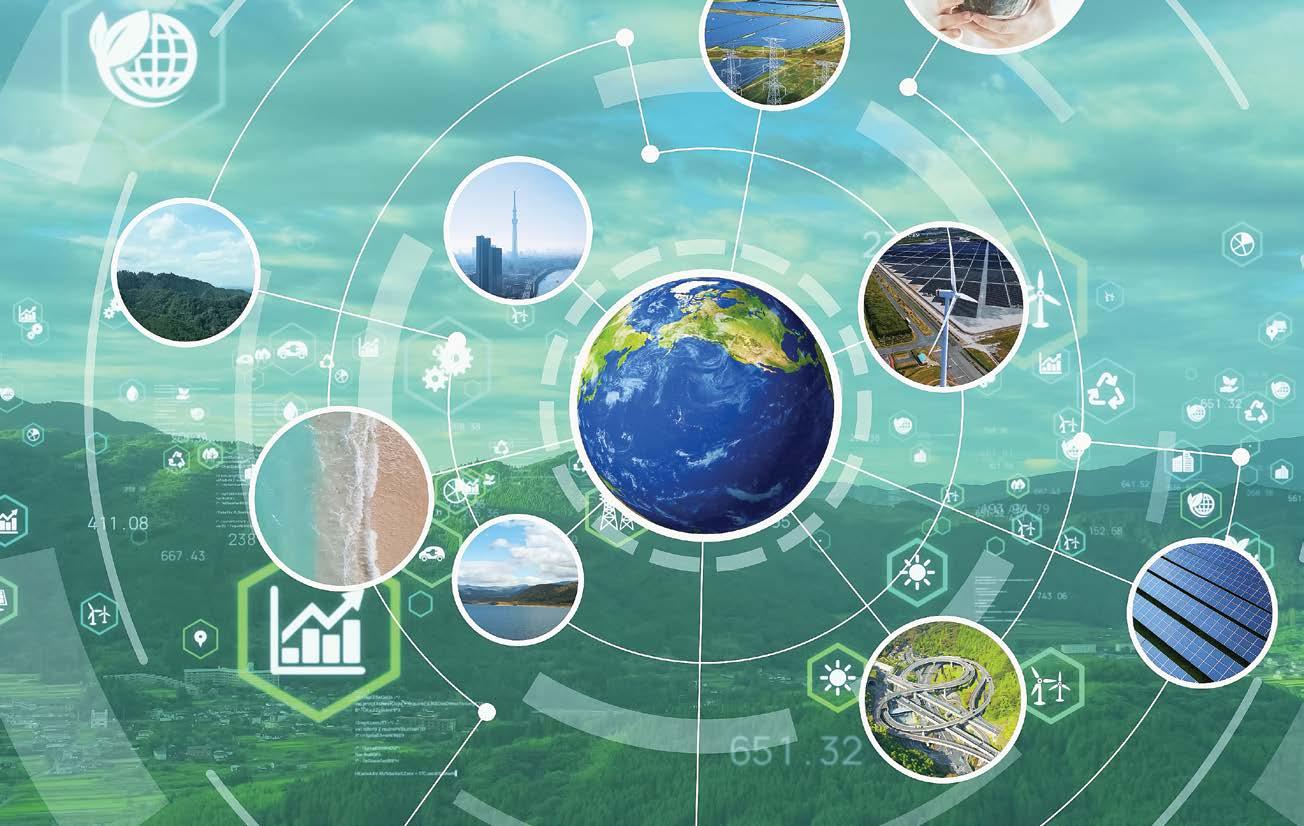
The recently released eighth annual Global Energy Talent Index, the world’s most established and comprehensive energy workforce trends report, highlights that the renewable energy industry is ahead of the curve on AI adoption, highly optimistic for the future and conscious of developing AI-related skills.
According to the report, produced by Airswift , 32% of renewables professionals already use AI – somewhat ahead of the industry average of 27%. A further 13% are expecting to adopt AI within six months. Most (87%) renewable energy professionals express optimism about the future impact of AI, with many anticipating an uplift in their personal productivity (78%), improved career progression opportunities (62%) and increased salaries (49%).
Nearly all respondents to the Global Energy Talent Index (GETI) 2024 report say AI will increase demand for skills, with two-thirds (66%) of renewables professionals expecting AI to increase pressure on them personally to acquire new skills. They see the highest demand in technical areas like IT, programming, software engineering, machine learning and cybersecurity. When exploring the relationship between potential skills development opportunities and perceived future demand, initial
findings highlight robotics and cyber security as areas the industry may need to proactively develop to shore up skills.
The report also found there is a need for soft skills like critical thinking, problem-solving and creative thinking, which are expected to increase, highlighting the unique human capabilities that complement AI technologies.
Janette Marx, CEO of Airswift, says, “By its nature, the renewables industry is at the cutting edge of AI with many companies exploring use cases and improving performance that will inspire others to take the leap. In this fast-paced sector, professionals are unafraid to vote with their feet to unlock AI-related career progression, job satisfaction and work-life balance; renewables companies will need to stay on the front foot with AI to retain talent. In parallel, those professionals who spend time learning new skills stand to improve their career prospects by differentiating themselves from other candidates.”
While concerns exist about a lack of human touch, insufficient training and cybersecurity risks, each challenge that arises presents an even bigger opportunity for companies.
“AI will create new challenges around data security and ownership, and questions remain over who owns the outputs. This is an opportunity for companies to reduce risks by harnessing AI’s predictive capabilities to boost cyber security,” says Marx.
The renewables industry is at the cutting edge of AI.
Salaries in the renewables sector have rebounded above pre-pandemic figures, with 51% of professionals reporting a pay increase – a notable rise from 47% last year. This upward trajectory in compensation aligns with the accelerating clean energy transition. Moreover, amid the global push for decarbonisation, companies are increasingly offering overseas job transfers, now at 58% compared to 52% in 2022.
Continuing a trend identified last year, the report reveals an intense competition for talent in renewables. Approximately 32% of workers have been headhunted six or more times, with many receiving offers from outside the industry. This is reciprocated by 88% of workers considering job switches, driven by career progression opportunities and broader industry interest.

Despite apparent satisfaction with salaries and steady appetite for regional relocation, professionals are not completely rooted in place: 91% are open to moving roles, the highest of the survey’s sectors. Furthermore, while most prefer to stay within the power sector (58%), 44% are open to going elsewhere within the energy industry, and 23% would consider roles in a new sector altogether. As was the case last year, renewable energy is the sector of choice (cited by 54%), followed by oil and gas (36%). Beyond energy, 35% would move to the technology sector. Manufacturing is becoming steadily more attractive, having been selected by 11% in 2022, 16% in 2023 and now 19% in 2024.
The reasons for moving roles mimic those for moving regions: career progression is the primary motivator (chosen by 27%), though by much less than last year (38%). Interest in the wider industry is second (15%), and the chance to work with innovative technology takes third place (12%), eclipsing ESG concerns which plummeted to seventh place this year.
Commenting on the findings, Wenche Kjølås, independent director at several companies, says: “A picture of fragile stability. Salary growth is good but not spectacular, and though career progression remains a top concern, professionals seem less convinced they need to make a move than last year to continue their career trajectory. Yet, openness to moving roles and regions is high, indicating a sector where professionals are settled but wouldn’t take much prompting to reconsider. As a wellestablished industry, power professionals are self-assured and have much to offer other sectors.”
Hiring managers should take note: 81% of employees have been approached for another role in the last year, while over a third (34%) have been approached six times or more. A significant minority (19%) have received 11 or more approaches, with over one-third of respondents saying more than half of these approaches came from beyond the power sector.

The Global Energy Talent Index (GETI) was launched in 2017 to chart emerging trends across the global energy workforce. GETI has since drawn on insights from thousands of professionals to create a comprehensive map of a changing energy landscape.
This year’s report explores how the rise of artificial intelligence (AI) is reshaping everything from job roles to skills in demand and whether workplace policies and training priorities are keeping up. GETI tracks the extent of AI adoption, popularity and policy awareness across the industry and anticipates the major risks and opportunities it presents. This report surveys an industry on the cusp of a technological revolution.
Building on the success of the seven previous volumes, GETI 2024 draws on the views of almost 12 000 energy professionals in 149 different countries. The 55-question survey was open for nine weeks and closed at the end of October 2023. It aims to provide insights that will help hiring managers and professionals alike to better understand how AI is changing jobs, and what skills will be most prized in the future.













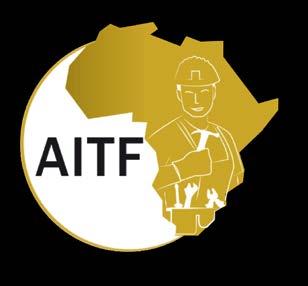



The Energy and Water Sector Education and Training Authority (EWSETA) is developing and implementing specialised renewable energy and water resource management training programmes, in a bid to align with industry needs and technological advancements.BY EWSETA
The EWSETA CEO, Mpho Mookapele, engaged with media on the back of growing research that macroeconomic trends and technological advancements will continue to disrupt labour markets worldwide.
The International Energy Agency (IEA) last year revealed that 4.7-million more people were employed in clean energy globally in 2022, than in 2019. Concerns around the “green skills gap”, as it has become known, have been echoed by a recent report from LinkedIn which shows that only one in eight employees globally possess one or more green skills.
“We don’t want to leave South Africa’s young people and workforce behind; it is important for businesses to share their skills plans with us, so that we can capacitate learners accordingly. Together with government and private entities we are collaborating to fast-track skills development initiatives that seek to upskill and reskill employees to meet the workforce demands of the changing energy and water sectors,” says Mookapele.
In the rapidly evolving energy sector, EWSETA currently develops qualifications that will respond to the gaps in the curriculum. The skills programmes that will be introduced include wind turbine operation, biogas installation, microgrid and battery energy storage operation, solar PV manufacture, design and installation.
Among the courses in the pipeline are water works management, solar panel installation, wind turbine maintenance, and other green energy solutions. Mookapele says, “When the sector needs certain skills, we are committed to working together with industry to build these capabilities. Ultimately, we exist to ensure industries are successful. As such we aim to move with agility to ensure that these programmes and qualifications are concluded and submitted for registration with the Quality Council for Trades and Occupations (QCTO) and the South African Qualifications Authority (SAQA).”
Due to the boom in the photovoltaic sector, because of more people going solar, the SETA is also currently working with industry to ensure that minimum skills requirements are mandated for the PV Green Card training. The South African PV Green Card is

a quality assurance standard for solar PV installers, and it is hoped that these minimum requirements will mitigate against substandard installations.
The EWSETA is looking for partners that will enable retro-fitting technical workshops for Technical and Vocational Education and Training (TVET) colleges, to ensure that they are responding to the tech-developments in the industry.
In the water sector, the EWSETA partners with water boards, municipalities and private industries to develop water-related qualifications that aim to address the challenges around clean drinking water and wastewater treatment plants.
In response to the evolving water landscape, a Water Works Management National Qualifications Framework 6 (NQF) has been registered. EWSETA is in the process of developing a water resource management qualification at NQF level 8 and a skills programme for water conservation practitioners.
Advances in water treatment processes will necessitate the development of qualifications that will respond to the future treatment landscape. These future technologies include biological water treatment and smart water grids, among others.
“As the world transitions to net zero, the traditional career landscape is changing, and it is up to all of us to future-proof our workforce. EWSETA is taking strides to harness the opportunities that these exciting changes present,” concludes Mookapele.
EWSETA is a skills development authority serving the energy and water sectors. It is one of 21 Sector Education and Training Authorities (SETAs) established in South Africa in terms of the Skills Development Act of 1998 – amended. It plays a crucial function in ensuring that the National Skills and Development Strategy is executed within the energy and water sectors.
Do you have what it takes to drive transformation in the energy sector? Addressing this challenge is essential for achieving a sustainable future. Paul Bessems, a seasoned strategist in sustainable leadership and digital transformation, guides organisations through this shift, ensuring they remain focused on environmental objectives while adapting to new realities.
Paul Bessems has spent decades developing methods like the Digital Assembly Line, the Community Model Canvas and the Double-Stack Strategy. He focuses on practical solutions, combining his knowledge of technology and sustainability to help organisations with their sustainability strategies. His approach is all about simplifying complicated concepts and making them accessible and actionable for businesses aiming to transition into greener practices. He is also a tutor at Business School Netherlands and facilitates workshops on sustainable leadership.
As someone deeply involved in shaping the future of work and energy, Bessems believes in straightforward, impactful change. This conversation explores his views on integrating sustainable practices with digital advances and how effective leadership can navigate the ongoing shifts in the energy industry.
How do sustainability and digital transformation come together to solve current energy issues?
With energy transformation, we are fundamentally altering our approach to energy management and consumption. Through my initiatives like the Digital Assembly Line, we aim to enhance efficiency while embedding sustainability deeply within operations. Integrating new technologies such as IoT, blockchain, smart contacts and AI helps us not only improve resource utilisation but also ensures alignment with broader environmental goals, propelling the energy sector towards a more sustainable future.
What should be the focus for leaders within the energy sector to ensure effective governance?
Leadership in this sector must transcend short-term targets, aiming instead for a future where ecological and social responsibilities are prioritised alongside profitability. This is where the essence of change leadership becomes critical. It’s about preparing for future shifts, recognising the broader impacts of energy decisions and guiding teams toward more sustainable practices through a wellunderstood, shared vision.
Considering change leadership, how should companies approach the integration of new energy policies and technologies?
Successful integration starts with a clear understanding and commitment at all organisational levels. Leaders need to champion the adoption of new policies and technologies by creating an inclusive environment where everyone feels part of the journey. This involves clear communication, continuous education and feedback mechanisms that allow for adaptability. Encouraging a culture of innovation and risk-taking is essential, as is recognising and celebrating progress towards greener energy solutions.
In an ever-changing environment, continuous learning is inevitable. How does a practical learning approach assist future leaders in navigating complex issues like energy transformation? Real-world application is critical, particularly for challenges as multifaceted as energy transformation. By engaging directly with
practical problems and experimenting with solutions, leaders gain a deeper understanding and are better prepared to make strategic decisions. This hands-on experience fosters a mindset of continuous improvement and adaptability, which is essential in the fast-evolving energy landscape.
With the pace of technological advances, what are the primary challenges for organisations transitioning within the energy sector?
The primary challenge is navigating the shift from traditional methods to innovative, sustainable solutions without disrupting ongoing operations. Effective change leadership is indispensable here, as it ensures the seamless integration of new more data-driven operating models and technologies while maintaining stability. Leaders must manage this delicate balance through strategic planning, engagement and clear communication to ensure the entire organisation moves together towards a sustainable future.
What final piece of advice do you have for those navigating the energy transition?
My key advice is to wholeheartedly embrace change leadership principles be adaptable, foster collaboration, and commit to ongoing learning. The energy transition is a collective endeavour; it thrives on shared knowledge and unified efforts. Leaders should cultivate an environment that encourages innovation and embraces the challenges and opportunities presented by the energy transformation.
The importance of change leadership in driving the energy sector towards sustainability is clear. Bessems’ strategies provide a clear pathway for organisations to follow, highlighting the need for adaptability, collaboration and a forward-thinking approach in tackling the sector’s complex challenges.


This MBA programme is a catalyst for both personal and organisational growth – it was a game-changer for me and the teams I lead.- Gerard Mohamed, Managing Director at NanoTech Petroleum PTY Ltd

Discover how with Business School Netherlands’ transformative MBA programme. Designed for forward-thinking leaders, our unique Action Learning approach puts you at the forefront of realworld problem-solving, ensuring that you drive immediate and significant transformation within your organisation.
At BSN, we believe in learning with purpose. “We learn to make an impact.” It’s not just about advancing in your career; it’s about shaping sustainable and ethical advancements in your industry.
We offer SDG scholarships to empower you in the journey towards sustainable leadership aligned with the UN Sustainable Development Goals. Join a vibrant community of over 15 000 professionals worldwide and embark on a journey that transforms you into a leader who makes a difference.
Website: www.bsn.eu
Address: Herenstraat 25, 4116 BK Buren, The Netherlands
Telephone: +31 (0)344-579054 +27 (0)82 688 7399 (WhatsApp)
Email: international@bsn.eu

Change
Create a more sustainable future through youth jobs.
Sponsor critical youth jobs. Empower communities. Create lasting impact.
Join the movement of over 1,680 trailblazing businesses changing the game by integrating YES into their ESG/SDG strategies.
Say YES today and gain B-BBEE levels.

To find out more contact corporatesupport@yes4youth.co.za

In an era defined by rapidly evolving social, environmental and economic challenges, sustainable development has become more than just a buzzword, it is a guiding principle shaping the future of work and society at large.
BY YOUTH EMPLOYMENT SERVICEAmong the myriad initiatives aimed at fostering sustainability, the Youth Employment Service (YES) stands out as a beacon of hope, bridging the gap between young talent and meaningful employment opportunities. Through navigating the complexities of a changing world, integrating YES into environmental, social and governance (ESG) strategies emerges not only as a moral imperative but also as a strategic necessity for building a more resilient and inclusive workforce.
At its core, ESG embodies a holistic approach to business and societal progress, emphasising the interconnectedness of environmental stewardship, social equity and transparent governance. While traditionally associated with corporate sustainability strategies, the relevance of ESG extends far beyond boardrooms, permeating various facets of socio-economic development. Youth employment, in particular, presents a compelling arena for ESG integration, as it intersects with issues ranging from climate action and community engagement to ethical labour practices.
Understanding the crucial role of ESG and SDGs
ESG strategies have become more and more important for investors and customers alike. The advent of ESG investment indices such as FTSE Russell, RobecoSAM, MSCI and others has shown that those buying both stocks and/or products care about a business’ external environmental and socio-economic impact, as well as internal governance structures that affect people, planet and processes.
YES can be seamlessly integrated into a business’ ESG and Sustainable Development Goal (SDG) strategies and impact the areas that mean the most to your business by creating critical youth jobs. If we can build and maintain this, our youth can inherit a South Africa that we can be proud of and that works for all.
The 17 SDGs have been adopted globally by both countries and companies, recognising that collaboration and partnerships are indispensable for their achievement. What sets the SDGs apart is their holistic approach, acknowledging the interconnectedness between goals. Reducing poverty means improving education and must also go hand-in-hand with other strategies such as improving climate change and working to preserve our oceans and forestry.
A company’s sustainability and ethical impact can be measured by the degree to which they align with these goals as well as the ESG criteria used to assess a company’s practices related to promoting social mobility of youth (especially those from historically disadvantaged communities), human rights, labour standards, community involvement, customer satisfaction and overall impact on society.
YES has a proven track record of creating meaningful, measurable impact for country company and youth. Since inception, over
135 913 work experiences have already been created for youth, injecting R7.4-billion back into the economy directly through youth wallets, with no government funding.
As the largest private sector led job creation initiative in South Africa, YES has a direct impact on SDG 8: “Promote sustained, inclusive and sustainable economic growth, full and productive employment and decent work for all”. Working towards this goal will mitigate poverty and hunger, and improve living standards. By working towards transformation and socioeconomic development, YES drives economic and gender equality, support for quality education, innovation and entrepreneurship.
The Youth Employment Service (YES) is the highest impact private sector youth employment programme in South Africa, affecting broad-based change across sectors, provinces and the country.
As a private sector-led initiative, YES addresses the country’s youth unemployment crisis by empowering businesses to create jobs for our unemployed youth. We’re youth-focused and business-led.
The YES turnkey solution works with 26 YES-vetted host partners across South Africa to place youth. If a corporate cannot place youth in their own organisation, they have the option to place youth with our host partners. The YES host partners are non-profit organisations working in high-impact sector communities, which means youth do not have to travel far for work and they can play an important part in building their own communities.
Historically, host partners have been focused on high-impact sectors like healthcare and education, but YES is also incorporating future-facing sectors with high absorption. Many YES jobs are being created in sunrise industries that position South Africa for the future by creating sustainable jobs at scale. These are industries that will help South Africa leapfrog up the world rankings of key sectors such as digital and technology, tourism, global business services, retail, information technology, creative and drones – meaning your business can create critical youth jobs in sectors that reflect your ESG/SDG strategies.
Creating youth jobs in sectors that build economic, social and environmental stability in communities (through the turnkey solution) is an effective way to systemically and holistically begin to co-create a future that works sustainably.
In exchange for sponsoring critical youth jobs, businesses can improve their B-BBEE score by up to two levels. Plus, for your first year with YES, your business can receive its B-BBEE level immediately if youth are contracted before your financial year-end.
Join the movement and co-create a sustainable future that works.
Find out more at yes4youth.co.za .




South Africans will have opportunities for specialised training that will equip them with skills for the changing world of work, the Fourth Industrial Revolution and the rapidly growing hydrogen economy.
BY CHIETAThe Chemical Industries Training and Education Authority (CHIETA) will be registering new qualifications on green hydrogen and offering specialised skills programmes relevant to growing the green hydrogen economy. This will include short hydrogen safety, storage and project management skills programmes. Existing qualifications will be augmented with specialised modules for training more gas, electrochemical and electrolysis engineers,” says Yershen Pillay, CEO, CHIETA.
“Africa can establish itself as a key supplier of green hydrogen and its derivatives, with the specific export products directly linked to geographical locations and existing industries (eg Sasol in South Africa). For this to take place, as CHIETA, we are ready to roll out the relevant skills required to ensure the country takes its place in driving the skills critical for the success of the green economy,” Pillay says.
South Africa can produce and export green energy, however, there has been minimal movement until now on preparing individuals with the tools to take part in the sector.
Citing the heavy demand for digital skills, Pillay said the chemicals sector, as an example, would require experts in petroleum and base chemicals proficient as information security analysts, data analysts and scientists, digital transformation specialists, big data specialists, lab analysers/technologists, sample takers, plant operators and material handlers. Therefore, the traditional roles of machine operator, quality assessor, quality inspector and lab analyst could make way for new skills and competencies, resulting in redundancies in mostly manual labour jobs.
Reskilling and preparing for jobs of the future via CHIETA is pivotal to ensuring people take up opportunities brought on by change.
Regarding the glass sub-sector as another example, Pillay forecasts new and emerging occupations, with roles for environmental specialists, process specialists, and e-learning developers, leaving inspection and package roles obsolete.
“CHIETA’s new initiatives on green hydrogen have positioned it as an innovation leader in the sector, a reason behind the drive to push skills development”, says Pillay, in furthering the transition

towards sustainable development in the chemical industry. This is crucial for addressing environmental concerns and offers various economic, social and competitive advantages.
To this end, CHIETA is implementing comprehensive strategies integrating skill development, green technology and rural development strategies to achieve sustainable growth. These strategies encourage rural development, utilisation of the potential of green hydrogen and implementation of blended learning initiatives, which can result in positive changes that benefit the industry.
“CHIETA continues to support technological advancements and long-term growth in the chemicals sector through funding skill development initiatives,” he adds.
Explaining the critical research findings from the CHIETA study, Pillay reveals that there are mixed perceptions on the state of readiness for South Africa to adopt green hydrogen. Three significant concerns around the adoption of green hydrogen in South Africa: the technology required, the skills needed and the economic viability of hydrogen as an energy source.
Unpacking emerging job opportunities that could become available in green hydrogen, he provided a list of roles, including hydrogen fuel cell technicians, hydrogen power plant installation, operation and management, policy analysts, pipefitters, hydrogen sales and marketing consultants, hydrogen fuel transporters, hydrogen vehicle electricians, power system electricians, storage specialists and hydrogen systems safety analysts, among others.
There is a key demand for hydrogen worldwide, hence the need to ensure that the skills pipeline is urgently strengthened.
As a trusted partner in skills development and training for the chemical sector, CHIETA funds the industry for the various occupational programmes as well as certain TVET sector and higher education programmes. In this regard, CHIETA is guided by its well-researched Sector Skills Plan that documents the hard-to-fill skills and positions within the sector.
Resources 4 Africa is pleased to announce the 4th edition of its annual Hydrogen Economy Discussion, which brings together all the key players, including government, mining companies, OEMs, investors, industry associations, hydrogen project developers, equipment suppliers, infrastructure providers and independent advisers, to debate the potential of the green hydrogen economy and its implications and opportunities for Africa. This year discussions will focus on:
• The global outlook for green hydrogen supply and demand
• The reality of green hydrogen in South Africa and further afield
• Local, regional, continental and international collaboration initiatives
• Meeting the challenges of hydrogen production, distribution and storage
• Green hydrogen as a demand driver for PGMs
• Investment opportunities in green hydrogen
• And much more….

A convergence of interests between Japan and Southern Africa presents a unique opportunity for economic expansion by seizing the initiative to play a prominent role in defining the global hydrogen economy.
BY SANEDIThe inability to beneficiate its natural resources has hamstrung Africa’s development for decades South Africa is determined to not err again in its transition to a new energy era.
“It is an opportunity we cannot afford to waste,” says the head of the Department of Science and Innovation’s (DSI) energy secretariat at the South African National Energy Development Institute (SANEDI), Professor Sampson Mamphweli, who is instrumental in shaping a partnership between the South African and Japanese governments that aims to advance the application of hydrogen technology worldwide. Hydrogen-related engagements between the countries started four years ago when Japan first expressed an interest in buying green hydrogen from South Africa. A memorandum of cooperation was signed between South Africa and Japan in November 2023 when a South African delegation led by Minister Blade Nzimande travelled to Japan. Since then, much progress has been made in implementing the provisions of the agreement, with local companies Hive Energy and Sasol having signed agreements with Japanese investors.
At the University of Cape Town, researchers presented the technologies they have developed to the Japanese delegation, focusing on membrane electrode assemblies (MEAs) that Japanese companies want to use at an industrial scale. Manufactured using

The proton exchange membrane fuel cell domain generated by Wang et al. a) 2D and b) 3D rendering of the segmented membrane electrode assembly with artificially overlayed flow channels.
one of the PGMs available in South Africa, MEAs are at the heart of hydrogen fuel cell and electrolyser applications.
South Africa’s hydrogen society roadmap was approved by Cabinet in 2021. It consolidated the different strategies related to the hydrogen economy that had been developed by various government departments. Under the auspices of the Department of Science and Technology, the roadmap identified catalytic projects crucial to realising the country’s hydrogen ambitions.
One such project entails hydrogen corridors for hydrogen-fuelled trucks carrying freight from Limpopo to Gauteng and from Gauteng to KwaZulu-Natal, with support infrastructure such as hydrogenproduction hubs and science centres.
Hydrogen is a clean and renewable energy source, but it requires plenty of energy to produce.
Another is the Boegoebaai Green Hydrogen Special Economic Zone in the Northern Cape in which Sasol will be an anchor development partner, along with the Northern Cape Development Agency, Transnet Ports Authority and the Port of Rotterdam in the Netherlands. The project involves the development of a deep-water port and associated infrastructure for the export of green hydrogen to Europe. The CSIR is currently conducting the feasibility studies.
“Collaboration with Japan is invaluable in helping us understand what is required to stimulate the hydrogen economy,” says Prof Mamphweli. “Our goal is to develop a value chain that starts with the mining of PGMs and ends with established industries that supply technology and products for local use and export. We want to build the hydrogen sector on local beneficiation of our PGMs.”
Green hydrogen production will also alleviate South Africa’s gridenergy shortage. The energy needed to run hydrogen systems are mostly consumed at night, leaving it available during the day to supplement grid electricity. The Nelson Mandela Bay Municipality has entered into an agreement with Hive Energy to buy some of its green energy.
Another catalytic project is where Eskom is working with the DSI and the SANEDI energy secretariat to develop a green hydrogen facility at its Rosherville research centre in Gauteng.
“The multibillion-rand foreign direct investment – as much as R300-billion in the next three to five years – will not only transform the green energy sector, but our country in its entirety in ways we might not even fully grasp yet,” concludes Prof Mamphweli.

Some in Southern Africa’s energy sector, including Namibia and South Africa, are exploring the potential benefits of embracing a hydrogen economy, primarily driven by green hydrogen.
BY TSHILIDZI MARWALAGreen hydrogen can be produced by electrolysing water into hydrogen and oxygen using energy from green sources like the sun, water and wind. When hydrogen fuel is burned, it turns into water instead of carbon dioxide, as happens when fossil fuel is burned. Of value in the move towards a sustainable energy system, green hydrogen can be used in hard-to-decarbonise areas like heavy industry and transportation.
The abundant sunlight and Platinum Group Metals (PGMs) in Southern Africa necessary for producing green hydrogen offer the region a comparative economic advantage. Most of South Africa has more than 2 500 hours of sunshine per year. The average daily amount of sunlight is between 4.56.5kWh/m 2 and 6.5kWh/m 2 . The average yearly 24-hour solar radiation in South Africa is 220W/m 2 , which is higher than in many parts of the US (about150 W/m 2 ) and the EU (about 100W/m 2 ).
Catalysts speed up the process at the anode, where water is oxidised to make oxygen and protons, and at the cathode, where protons make hydrogen. Anode catalysts are usually made of iridium or ruthenium oxide, while cathode catalysts are made of platinum, which are all PGMs. South Africa produces between 80% and 85% of the world’s iridium and 75% of the world’s platinum. Namibia is also taking advantage of this opportunity, and in May 2023, it reached an agreement with Hyphen Hydrogen Energy on a deal worth $10-billion
Hydrogen is a flexible form of energy that can be used in many ways. Fuel cells that run on hydrogen mix hydrogen and oxygen to generate electricity, heat and water. These fuel cells are used in cars, power plants, cell phones and computers. In an internal combustion engine, hydrogen is burned like petrol, producing only water vapour instead of carbon dioxide from petrol.
Hydrogen is an energy storage medium. Electrolysis, which is the process that uses electricity to separate water into hydrogen and oxygen, can use excess electricity from sources like hydropower plants, the wind or the sun to generate hydrogen that can be stored and used when there is a greater electricity demand or when renewable energy sources are not producing as much energy. Also, hydrogen can be used to provide heat and can be mixed with natural gas to lower the amount of carbon dioxide released by heating systems.
Hydrogen is a clean and renewable energy source, but it requires plenty of energy to produce, especially when natural gas or other fossil fuels are used. If produced from renewable energy sources, hydrogen can be a stable energy source. Electrolysis has an efficiency between 60% and 70%. But the efficiency of the process depends on the technology and power source that is used.
Japan and Southern Africa have distinct socioeconomic and geographical characteristics and have shown interest in the hydrogen economy. Highly industrialised Japan has led the world
in developing and applying hydrogen technology. Several factors influence Japan’s interest in hydrogen as a primary energy source. Due to its limited domestic energy resources, Japan relies heavily on imported fossil fuels. This reliance makes Japan vulnerable to global energy market fluctuations. Additionally, Japan is committed to reducing its greenhouse gas emissions to become carbon neutral by 2050. The hydrogen economy offers a means to achieve its goals.
Japan’s plan for hydrogen includes producing, storing, transporting and using it. Significant investments have been made in research and development, infrastructure and public-private partnerships. In addition, Japan has advanced fuel cell technology, with Toyota leading the way in hydrogen fuel cell vehicles . The high cost of producing hydrogen, especially green hydrogen through electrolysis, is one of the biggest challenges. Another is that there is no good network for distributing hydrogen.
As home to 70% of the world’s deposits of PGMs, South Africa holds the keys to the development of large-scale hydrogen technology.
Given its abundant natural resources and developing economies, Southern Africa presents different opportunities. Countries like South Africa have already initiated research into the hydrogen economy to resolve energy security, and stimulate economic growth. Southern Africa could be a significant exporter of green hydrogen because it has plenty of green energy sources and is strategically located. However, the region faces significant obstacles. At this point, there is a shortage of hydrogen production, storage and distribution infrastructure. In addition, the Southern African region is hindered by the high initial investment required for hydrogen technologies.
Although Japan and Southern Africa are at different phases of economic development, these countries recognise the potential of the hydrogen economy. Japan is well-positioned to dominate hydrogen utilisation, especially in the transportation and residential sectors, due to its advanced technology and industrial capacity. Southern Africa has the potential to become a significant participant in the production of green hydrogen due to the abundance of the necessary resources. This convergence of interests presents a unique opportunity for mutual cooperation and economic expansion. Japan and Southern Africa can play a prominent role in defining the global hydrogen economy through strategic cooperation and a shared commitment to a sustainable future.
Featuring three 110MW wind farms, the Impofu project marks a significant contribution to South Africa’s renewable energy landscape, underscored by a landmark achievement – the longest privately permitted powerline for any renewable energy project in South Africa.
“Since 2013, we’ve signed up 87 separate parcels of land for the powerline and spent years negotiating with farmers to lease land on which to build wind turbines. In total, the wind farms’ 57 turbines will extend across 12 pieces of land – with significant benefits for landowners and local agricultural output,” says Jadon Schmidt, business development manager at Red Cap Energy, and project manager of the Impofu project since its inception.
Red Cap, a renewable energy developer, worked closely with landowners to plot the position of each wind turbine, managing expectations and leveraging local in-depth knowledge of the landscape. “The whole process has been pretty smooth. I had a good idea of where I didn’t want roadways to go, to make sure I didn’t end up with unusable pieces of land. Besides that, I made suggestions about where it would and wouldn’t work to put up the turbines, for
example, if an area was too wet or difficult to access,” says Vernon Basson, owner of Vergaderingskraal, who has leased land for the Impofu project.
The turbines will be constructed with locally made concrete towers. Once complete, the development will supply 330MW of renewable energy to Sasol South Africa’s Secunda site, where French-based industrial gas supplier Air Liquide operates the largest oxygen production site globally. In partnership with multinational renewable energy corporation Enel Green Power, the R9-billion project was subject to an extensive environmental impact assessment and public engagement process.
Red Cap faced several challenges during development, including the discovery of a Marshall Eagle nest in the area a year and a half into the impact assessment process. Collaborating with local environmental organisations, the placement of certain turbines had


to be reviewed to ensure the protection of the endangered bird. The powerline was also rerouted and redesigned on numerous occasions, to accommodate objections from a small portion of landowners.
“The relationships we’ve established with everyone involved have been critical to the success of the project and overcoming obstacles. We are so grateful to the landowners, who had to be incredibly patient and flexible during the planning process. Then there’s the host of environmental specialists, who helped us ensure that we’ve made the best decisions for all animals and people who depend on the land,” says Schmidt.
“The extra income from the turbines is going to help us keep our livestock healthy and deal with drought during the summer. We are going to use this opportunity to grow and expand our farming interests,” says Xolile Peter Lamani, chairperson of the Reebok Rant Worker’s Trust – which owns a dairy farm near Oyster Bay that has leased land for the wind farm.
Red Cap Energy is a leading local developer in renewable energy, with a depth of experience developing wind farms. To date, Red Cap Energy has developed 191MW of installed wind power and has 1.5GW of wind power fully permitted, with an additional 2GW in various stages of development.
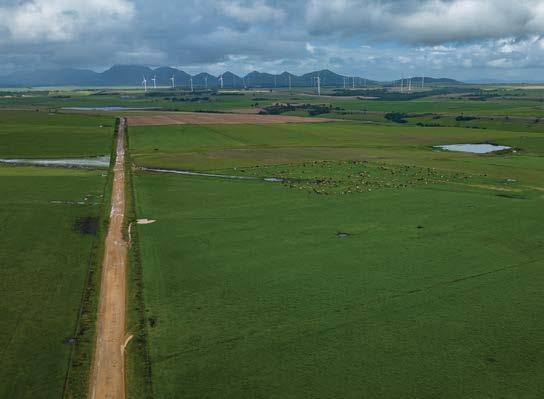
• Three 110MW Impofu wind farms in Kouga, Eastern Cape.
• Estimated total energy output of 1 200GW per hour.
• In total, the development will comprise 57 turbines.
• Blade length measured at 81.5m, with a total diameter of 163m.
• Turbines to be constructed with locally made concrete towers, at 120m hub height.

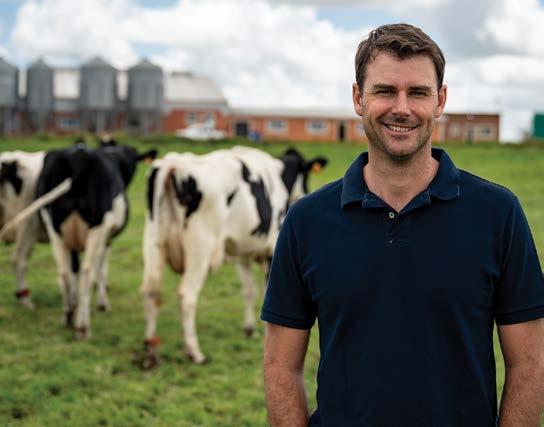

The economic impact of coal across South African communities cannot be underestimated, particularly when such an impact is investigated once coal has been fully discontinued. Close to a quarter of a million workers are employed in the coal industry, hence any discontinuation of this fossil fuel cannot be spoken of without considering the socio-economic impact.
BY THE COUNCIL FOR GEOSCIENCE
The obvious reality is that climate change has become an urgent agenda item, globally. The urgency has been necessitated by the entire world in civil society, private and public sectors as solutions are sought on how to address climate change. South Africa, like the rest of the world, is keen to play a leading role as we seek lasting solutions that protect our environment and reduce greenhouse carbon emissions. That’s a journey.
The Council for Geoscience (CGS), with over 111 years of geoscience knowledge and experience, continues to be fully committed to finding new technologies that will enhance environmentally friendly energy sources. Sustainable solutions are needed though. One of these, currently considered globally as one of the most key solutions, is Carbon Capture, Utilisation and Storage (CCUS). The CGS has embarked on a scientific intervention of CCUS that will see the sustenance of South Africa’s energy and national development needs, while equally contributing positively towards the transition from a high to a low-carbon economy.
Globally, hydrocarbons like coal and oil have been largely depended on. South Africa is no exception. It is 30 years since the United Nations Framework Convention on Climate Change (UNFCCC) was initiated and most member states are signatories. The UNFCCC called on members to act in the interest of their citizenry and humanity at large.
Scientists, appreciative of the role played by coal, have identified the problem and admit how complicated it is. It is not an easy solve. Solutions must be found as we move to a low-carbon economy and science must form the basis of such.
One of these solutions is CCUS. This is a solution inspired, among many other benefits, with the identification of carbon dioxide (CO 2) as a greenhouse gas that has become central to global warming.
Advances in CCUS technology globally, including in countries like the United States, Norway and Canada have proven the technology to be a feasible alternative to reducing CO2 emissions through utilisation and underground storage in suitable geological formations. Once
underground, the CO 2 interacts with the geological environment and mineralises, which reduces the risks associated with leakage.
CCUS’ intention is to capture CO 2 from the source such as the fired-power plants and transport it to carefully selected geological sites for permanent storage, which is supported by an extensive monitoring, pre, during and post injection and storage.
The CGS has recently commenced with geological characterisation of an identified potential site in Leandra, Govan Mbeki Local Municipality in Mpumalanga, where consultations with a myriad of stakeholders from three government spheres, through to local traditional leaders, communities, environmental non-government organisations (NGOs) and farmers to local business have borne fruit, mostly with the long-term goal of seeing the community benefit from this development. The Govan Mbeki Local Municipality has contributed a piece of land for this research to be implemented. The identified site has taken into consideration all factors such as location, geology, socio-economic and technological aspects to make a pilot feasible, thus a site proximal to CO 2 emitters.
Mpumalanga is South Africa’s coal capital, making the province an energy hub. Hence, the current coal plants cannot be merely decommissioned without taking into cognisance the implications of such an action.
The two-pronged approach then sees the CGS being on the drive to make South Africans aware of the CCUS technology. The technology is encouraging, though we need to be mindful that it may take time before we see the commercial benefits and return on investment.
The models that have worked in countries such as the United States, cannot be readily assumed to also work in South Africa. Hence, the CGS and other scientists are investing time and effort in extensive techno feasibility studies and technological disruptions, particularly adaptable to sites in South Africa, both on and offshore.
South Africa has pledged to cut CO 2 emissions by 50% by 2030, which is six years from now. Acknowledging the significance and abundance of coal, it is crucial to explore practical approaches to
meet this goal and effectively address emissions stemming from hydrocarbons like coal to enable the country to transition justly to a low greenhouse gas economic development trajectory in conjunction with other energy sources such as renewables and nuclear.
The truth about coal is that it is affordable. There are enough coal companies in South Africa employing tens of thousands, albeit financing development of coal projects has become increasingly challenging whilst the financing institutions investigate how best to contribute towards the reduction of greenhouse emissions. Technologies need to be applied on how best to use coal as we transition towards a low carbon economy. The big question is whether this just transition can be done sustainably, justly and justifiably?
Once we have figured this reduction intervention, such a breakthrough will not only benefit Eskom, communities and business, it will go a long way in the commitment we have made when it comes to CO 2 emissions. As Eskom unbundles into three divisions, we do hope these would be synced to address this long-standing problem as Eskom continues to operationally rely on coal.
The technology associated with CCUS is centrally developed as an economic contributor that aims to do better and contribute generously towards the country’s gross domestic product. In this regard, the South African government assigned the CGS as an implementing agent for the CCUS research in partnership with the World Bank. The CGS has further developed a network of private business partnerships that span the Development Bank of Southern Africa, Sasol and Exxaro, while others are still in the pipeline for finalisation. With such partners, this intervention is guaranteed to benefit from collective wisdom, resource crowding and accelerated implementation of ideas and technological applications.
The CCUS project has underlined how pivotal South Africa’s commitment to reducing greenhouse gas emissions is. The project directly responds to government’s call that innovative solutions are sought for a transition to a low-carbon economy.
It’s a question that cannot be brushed aside, one that a project such as CCUS aims to answer as it undertakes to be part of the solution.

Solutions must be found as we move to a low-carbon economy and science must form the basis of such.

While the journey of this project can be traced back to Leandra, the ultimate benefit will be enjoyed by the entire country. Moreover, it has been proven from other parts of the world that CCUS could be a viable option – our aim though, is to not only copy from the work that’s already begun in other parts of the world, but we endeavour to deliver a project that takes into account our diverse geology, unique environment and overall technical excellence of our South African institutions.


should not condone their extraction at all costs
Global warming is real and climate change is worsening day by day with raging forest fires, unseasonably warm winters and flooding disasters taking place across the world. Meanwhile, the carbon-zero transition required to move away from such a dire future is hampered by a key weakness – critical minerals.
BY ELIZABETH STEYNhe energy transition depends on so-called “battery” or “critical” minerals to be successful – minerals which must be mined or recycled. Smartphones, superconductor chips, renewable energy technologies and even the defence industry all rely heavily upon critical minerals. Demand for these minerals is set to triple by 2030 . However, the uncomfortable reality is that the supply of these metals is simply not there, and their extraction carries huge social and ecological risks. This problem affects us all.
There is no universal consensus on what critical minerals are. Various countries and bodies such as the International Energy Agency or the World Bank have different lists and the contents of these lists do not remain static.
For instance, the United States has two lists: the US Geological Survey Critical Minerals List which contains 50 individual minerals and the Department of Energy Critical Materials for Energy List , which adds energy materials like copper and silicon. The European Union has a list of 34 critical raw materials
The term “critical mineral” is technically a misnomer as most of the elements on these lists are metals and not minerals. However, there are broad areas of agreement: most lists include battery metals such as lithium, nickel, cobalt and copper as well as rare earth elements and platinum group metals. Other common elements are the alloys of steel, such as chromium, manganese and zinc.
All these elements are crucial to the energy transition. Battery metals power electric vehicles (EVs) and storage batteries, steel and rare earth elements are imperative for wind turbines and copper is essential for power grids. Simply put, shortages in critical minerals mean a delayed energy transition and worsening climate impacts

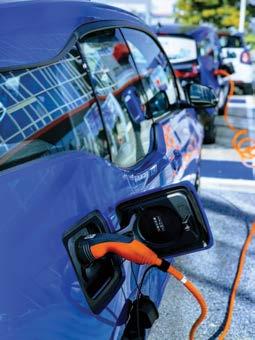




Yet EVs are only as “clean” as the electricity grid that feeds them. They are only as “green” as their component parts. The batteries require nickel, which could well have come from a mine in the Philippines that legally dumps its tailings (toxic waste) in oceans. And, the vital cobalt can’t be separated from the human miseries of mining in the Democratic Republic of the Congo, a mining industry referred to as “ a new form of slavery, a subterranean slavery ”.
Critical minerals are often found in deposits that are highly concentrated geographically, and China is a dominant force in their processing and supply. This means that geopolitical tensions can make it harder to secure critical mineral supply chains.
A December 2023 World Economic Forum White Paper maps ecosystem risks arising from a lack of supply in critical minerals. Its conclusions are clear. Not only does a delayed energy transition await us at the end of the road, but the signposts along the way indicate that these risks are already playing out.
For instance, political risks identified include conflict over resources, increasing resource nationalism and increasing trade fragmentation. Among the economic risks are market volatility and uncertainty, as well as stockpiling of critical minerals. Socio-environmental risks comprise an increase in exploitative and illegal mining and a higher demand on ecosystems, while technological risks point to cascading renewable technology shortages.
When considering the implications of minerals shortages, it may be tempting to justify critical minerals mining at all costs, however, this is a dangerous fallacy. The social and environmental impacts of poorly mined critical minerals are dire.
These range from lithium’s water intensity in the fragile landscapes of the Chilean Atacama desert to the toxic processes inherent in the processing of the rare earth elements whose use is ubiquitous in smart technology and wind turbines. Diminishing ore grades mean ever bigger tailings dams, and climate change makes them more prone to accidents.
Shortages in critical minerals mean a delayed energy transition.

For indigenous communities, critical minerals hold both promise and peril. Studies have shown that critical minerals are often heavily concentrated on indigenous lands. For them, the question arises whether this will open the door to indigenous economic development or if it will constitute yet another instance of displacement and ecological destruction on their doorstep.
The importance of independent standards authorities such as the Initiative for Responsible Mining Assurance (IRMA) cannot be overemphasised. In contrast to industry standards such as Towards Sustainable Mining, IRMA represents multiple stakeholder views. These include communities, employees, investors and mines.
Mining is by its very nature a highly energy intensive process. While it is expensive and technically complex to retrofit existing mines for electrification purposes, new mines should be designed with carbon neutrality in mind. Of course, this can be particularly difficult in places that are experiencing infrastructure challenges, such as limited renewable or low carbon energy options.
Greenfield mining is not the sole solution to the critical minerals’ conundrum. Urban mining (extraction from electronic waste) can play an important role. It’s also important to design products manufactured from critical minerals with recycling and repurposing in mind.
By investing in research and development, we can find substitutes to the most problematic minerals, whether the underlying issues are geopolitical constraints, toxicity or human rights abuses.
EVs are only as “clean” as the electricity grid that feeds them.
At the end of the day, we need responsible mining practices that will enable us to obtain the minerals required to make the energy transition work. However, we must do so in a way that is just and equitable towards both people and the planet.
This goal is a race against time, requiring both innovation and a never-ending vigilance against a lowering of standards to meet short-term needs – a vigilance which we all must work to maintain.
Vezinhlanhla Mining strives to be a leading black-owned, diversified mining company in Africa while ensuring participation in the discovery, exploration and beneficiation of Africa’s mineral resources. Green Economy Journal speaks to the founder, Prince Vusi.
Please tell us about Vezinhlanhla Mining.
Vezinhlanhla Mining is a 100% black-owned mining contractor which combines top-notch experience with the versatility and innovation required by the mining industry to be sustainable in the long term. Vezinhlanhla is an empowered turnkey contractor with capabilities across the underground and opencast contract-mining value chain.
What is the company’s history?
As a Vusimuzi Group subsidiary, I established Vezinhlanhla Mining in 2017 to focus exclusively on the mining industry. Initially there was not much difficulty in establishing and growing the company, although we did have some challenges in 2022, but we showed immense resilience during the rebuilding phase.
What is your vision?
In 2024, our vision is to dominate the industry with my team and reinforce our position in the market, not only as a 100% black-owned mining contractor, but also as a reliable and competitive independent producer, starting with those 0.1% holding stakes.
If
Please supply an overview of your offerings.
Vezinhlanhla is a mining contractor with capabilities across the underground and opencast contract-mining value chain. We offer the following:
• Underground and opencast mining
• Project and facilities management
• Plant and conveyor maintenance
• Crushing and screening
• Engineering and drilling
• Bulk material transportation and hauling
We provide extensive services for coal, gold and platinum group metals (PGMs) producers. Vezinhlanhla Mining was established with the sole purpose of servicing the mining industry – if it’s not in mining, it’s not for us.

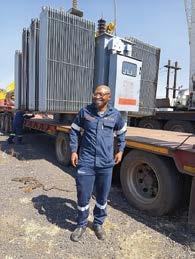
What is your view on sustainability?
Vezinhlanhla Mining takes this responsibility seriously by embedding sustainable practices and environmental, social and governance (ESG) principles into every project by using cutting-edge technology, conducting thorough environmental assessments and adopting eco-friendly materials and execution methods.



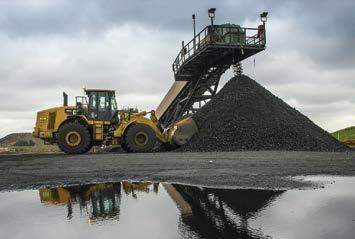


Vezinhlanhla Mining, a 100% wholly black-owned mining contractor established by Prince Vusi, combines leading experience with the versatility and innovation required by mining to be sustainable for the long term.
Established in 2017 as a mining contractor to service the mining industry, Vezinhlanhla is an empowered turnkey contractor with capabilities across the underground and opencast contract mining value chain. We provide extensive services for coal, gold, iron ore, manganese ore, chrome ore, nickel and platinum group metals (PGMs) producers.
Vezinhlanhla undertakes mining operations with miners, roadheaders as well as drill and blast applications, enabling our clients to outsource according to their unique needs. Our commitment to safety, health, quality and environmental management standards means we work towards continuous improvements in risk management to better deliver project excellence.
Our black empowerment credentials ensure that our clients benefit fully in terms of the mining charter requirement and the contractual conditions of key minerals purchasers.
The empowerment of women, youth and disabled persons should be achieved in all aspects of work. Vezinhlanhla has more women on board to strengthen the capacity of the business. The company will also employ youth to pass on the skills to the next generation as Vezinhlanhla grows. Bursary schemes will be introduced for students to further their studies.
Vezinhlanhla has developed a culture where there is no discrimination against disabled persons, hence it will seek to find, train and employ disabled persons with potential and enthusiasm.
Our objective is to train our staff and community. Undergraduates from universities and colleges studying engineering, safety or mining will be given the opportunity to further their studies in the field at Vezinhlanhla Mining.
Vezinhlanhla is committed to the broad-based black economic empowerment, and it supports the government’s initiative of transformation and affirmative action policies and will continue to implement such projects where possible. Vezinhlanhla has initiated projects whereby materials and equipment are sourced from black SMME companies thus to empower one of our own.
Vezinhlanhla Mining strives to be a leading black-owned, diversified mining contractor in Africa while ensuring participation in the discovery, exploration and beneficiation of Africa’s mineral resources. Our mission is to develop and consolidate a diverse portfolio of high-quality assets and services for the benefits of its stakeholders.
• A 100% wholly black-owned mining contractor
• Capabilities across the underground and opencast contractmining value chain
• Solely focused on the mining industry
• Viable partnerships and relations with our clients
To be a leading black-owned South African company that delivers value to all its stakeholders by:
• understanding the needs of our stakeholders
• delivering on and exceeding those needs
• attracting and retaining the best talent
• focusing on core assets: Pareto Principle
• focusing on owning and operating our assets
• embracing diversity
• ensuring sustainability, growth and good governance
• Reinforce our position in the market as a reliable and competitive independent producer and supplier
• Grow sales and customer base
• Vezinhlanhla Mining intends to acquire coal, gold, iron ore, manganese ore, chrome ore, nickel and PGM assets to develop new projects
• Power generation is a key area of opportunity – a synergistic venture that is now indelibly written into our corporate objectives
• Underground mining | Opencast mining
• Project management | Facilities management
• Plant maintenance | Conveyor maintenance
• Crushing | Screening
• Engineering | Drilling
• Bulk material transportation | Hauling
info@vezinhlanhla.co.za | vezinhlanhla.co.za
+27(0) 87 550 2087
Vezinhlanhla mining
Vezinhlanhla mining




The numerous rock art sites dotted across the Kagga Kamma Nature Reserve landscape provide vivid evidence of the lives, worldview, and fascinating social and spiritual beliefs of the Stone Age hunter-gatherers –the San – and the Khoekhoe-speaking herders – the Khoi – who inhabited, and ranged in, the area for thousands and hundreds of years, respectively.
The numerous rock art sites dotted across the Kagga Kamma Nature Reserve landscape provide vivid evidence of the lives, worldview, and fascinating social and spiritual beliefs of the Stone Age hunter-gatherers –the San – and the Khoekhoe-speaking herders – the Khoi – who inhabited, and ranged in, the area for thousands and hundreds of years, respectively.
In addition to the rock art, remnants of their livelihoods and experiences can still be found today, scattered across the Reserve, in the form of relics such as stone tools and ostrich eggshell fragments. However, the most recent, and by far the most exciting archaeological and cultural treasure found at Kagga Kamma, was that of a nearly intact Stone Age Khoekhoe clay pot, which was found by guests while out hiking and exploring on the Reserve.
In addition to the rock art, remnants of their livelihoods and experiences can still be found today, scattered across the Reserve, in the form of relics such as stone tools and ostrich eggshell fragments. However, the most recent, and by far the most exciting archaeological and cultural treasure found at Kagga Kamma, was that of a nearly intact Stone Age Khoekhoe clay pot, which was found by guests while out hiking and exploring on the Reserve.
On a particularly balmy day, Elizma Bester and Ivan van Niekerk, guests staying at Kagga Kamma Nature Reserve, ventured out on a hiking trail to explore.
On a particularly balmy day, Elizma Bester and Ivan van Niekerk, guests staying at Kagga Kamma Nature Reserve, ventured out on a hiking trail to explore.
They soon stumbled upon an incredible discovery: a Khoi ceramic pot, believed to be from the Late Stone Age period, and lauded as an exceptionally good archaeological find. The pot was found in the shelter of a rock outcrop, where it had remained relatively protected from the elements, along with numerous scattered stone tool deposits, ostrich eggshell fragments, and faunal remains.
They soon stumbled upon an incredible discovery: a Khoi ceramic pot, believed to be from the Late Stone Age period, and lauded as an exceptionally good archaeological find. The pot was found in the shelter of a rock outcrop, where it had remained relatively protected from the elements, along with numerous scattered stone tool deposits, ostrich eggshell fragments, and faunal remains.
On their return to the Main Lodge, Elizma and Ivan immediately notified management of the find, and so the process of having the discovery validated, through the proper channels, began. The Kagga Kamma Team reached out to Heritage Western Cape with photographic images of the pot in situ, requesting their input. Based on the evidence presented, Heritage Western Cape dispatched a team to Kagga Kamma Nature Reserve.
On their return to the Main Lodge, Elizma and Ivan immediately notified management of the find, and so the process of having the discovery validated, through the proper channels, began. The Kagga Kamma Team reached out to Heritage Western Cape with photographic images of the pot in situ, requesting their input. Based on the evidence presented, Heritage Western Cape dispatched a team to Kagga Kamma Nature Reserve.

Under the guidance of Waseefa Dhansay, Heritage Western Cape’s Assistant Director of Professional Services, and following an initial inspection of the site and surrounds, the team carefully retrieved the pot, along with associated lithics from the immediate area, as these help to provide context for the Khoekhoe pot and further insights into the site’s collective narrative. Once the pot was safely secured, the team went on to comb the surrounds for any further signs of the Khoekhoen and were rewarded with a rock art site just a few metres away, containing handprints, likely made using traditional ochre-based pigment.
The initial investigation revealed that the pot is an amphora-shaped vessel with a restricted neck, a curved and pointed base, and two intact horizontally pierced ears, identifying it as a functional vessel. The pot is considered to be in exceptional condition, and remarkably intact, apart from one minor hole and significant hairline fractures that have formed over time.
Believed to have been used as a cooking pot, that would have been placed and balanced directly on the coals of a firepit, as evidenced by the charring on the bottom, Heritage Western Cape advised against carbon-dating the artefact as the process would potentially damage the pot, and said that, given past studies in the Cederberg region, the artefacts found likely range between 500 to 8000 years old.
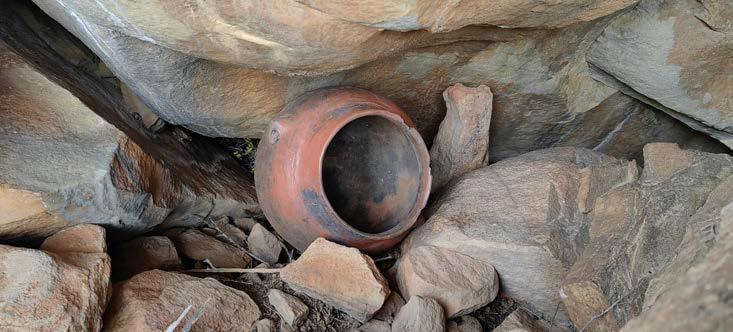
The pot will remain at Kagga Kamma Nature Reserve, and form part of a display, along with other artefacts, to provide guests with additional insights into the intriguing San and Khoi cultures, during related heritage tours and experiences



The paintings and engravings, found on cave walls and rock faces, and other archaeological traces, depict fascinating stories of the San and Khoi people who first walked these ancient lands. Honouring and preserving the heritage of these first peoples, imprinted upon and intrinsic to Kagga Kamma Nature Reserve, is deeply rooted in Kagga Kamma’s ongoing mission to safe-guard and appropriately share this special and unique environment with guests. Kagga Kamma continues to pay homage to the rich cultural history of the Reserve and the greater Cederberg area, through the preservation of the Rock Art sites and archaeological finds; and by sharing the incredible insights they provide into the rich and multifaceted lives and habits of the San and Khoi; and delving into their stories and beliefs with others, through educational experiences that inspire and connect people of today with our soulful heritage of the past.
www.kaggakamma.co.za
